Modern Monetary Theory
description: heterodox macroeconomic theory; describes currency as a governmental monopoly and unemployment as evidence that monetary supply is restricted; argues governments should print money to achieve full employment and fund purchases
46 results

The Deficit Myth: Modern Monetary Theory and the Birth of the People's Economy
by
Stephanie Kelton
Published 8 Jun 2020
Noureddine Taboubi, “Strikes Overturn Wage Cuts, but IMF Blindness Risks Ruining Tunisia,” Bretton Woods Project, April 4, 2019, www.brettonwoodsproject.org/2019/04/strikes-overturn-wage-bill-but-imf-blindness-risks-ruining-tunisia/. 25. John T. Harvey, Currencies, Capital Flows and Crises: A Post Keynesian Analysis of Exchange Rate Determination (Abingdon, UK: Routledge, 2009). 26. Bill Mitchell, “Modern Monetary Theory in an Open Economy,” Modern Monetary Theory, October 13, 2009, bilbo.economicoutlook.net/blog/?p=5402. 27. Predictably, the Volcker shock also devastated US workers, shutting down factories in the Midwest and ending manufacturing competitiveness with countries like Japan. Had the US established a job guarantee employment policy to automatically stabilize the economy at full employment—as MMTers and our forebears would have recommended and as many US civil rights activists were recommending—perhaps people around the world could have avoided this catastrophe. 28.
…
To find out more, go to www.hachettespeakersbureau.com or call (866) 376-6591. The publisher is not responsible for websites (or their content) that are not owned by the publisher. Library of Congress Cataloging-in-Publication Data Names: Kelton, Stephanie, 1969– author. Title: The deficit myth : modern monetary theory and the birth of the people’s economy / Stephanie Kelton. Description: First edition. | New York : PublicAffairs, [2020] | Includes bibliographical references and index. Identifiers: LCCN 2019059417 | ISBN 9781541736184 (hardcover) | ISBN 9781541736207 (ebook) | ISBN 9781541757110 (international) Subjects: LCSH: Debts, Public—United States. | Budget deficits—United States. | Government spending policy—United States. | Fiscal policy—United States.
…
A similar breakthrough is needed for how we understand the deficit and its relationship to the economy. When it comes to increasing our public well-being, we have far more options than we realize, but we desperately need to see through the myths that have been holding us back. This book uses the lens of Modern Monetary Theory (MMT), of which I have been a leading proponent, to explain this Copernican shift. The main arguments that I present apply to any monetary sovereign—countries like the US, the UK, Japan, Australia, Canada, and others—where the government is the monopoly issuer of a fiat currency.1 MMT changes how we view our politics and economics by showing that in almost all instances federal deficits are good for the economy.

New Laws of Robotics: Defending Human Expertise in the Age of AI
by
Frank Pasquale
Published 14 May 2020
Fallis and Amy Brittain, “In Virginia, Thousands of Day-Care Providers Receive No Oversight,” Washington Post, August 30, 2014, https://www.washingtonpost.com/sf/investigative/2014/08/30/in-virginia-thousands-of-day-care-providers-receive-no-oversight/?hpid=z3&tid=a_inl&utm_term=.0a5aff61e742. 60. Stephanie Kelton, The Deficit Myth: Modern Monetary Theory and the Birth of the People’s Economy (New York: Public Affairs, 2020). 61. L. Randall Wray, Modern Monetary Theory, 3d ed. (New York: Palgrave MacMillan, 2012). 62. Mariana Mazzucato, The Entrepreneurial State: Debunking Public vs. Private Sector Myths (London: Penguin, 2018). 63. Kate Aronoff, Alyssa Battistoni, Daniel Aldana Cohen, and Thea Riofrancos, A Planet to Win: Why We Need a Green New Deal (New York: Verso, 2019). 64.
…
Third, they predict disaster for governments whose money creation is unmoored from the constraint of private demand for their debts. What the gold standard once did, the golden handcuffs of the bond market now achieve: ensuring that states only issue a stable amount of currency. Another approach, called modern monetary theory (MMT), aims to upend this common sense of money at every turn by emphasizing the power of governments relative to other institutions.60 A household cannot tax thousands of other households in order to support itself; government can. A household cannot print widely accepted money to pay for its expenses; governments that issue their own currencies can.
…
That taxation may be painful, but it is to be meted out, by and large, to those most able to spark inflation (those with the most money) or those most responsible for it. Sector-specific strategies also make sense. For example, requiring larger down payments for mortgages or taxing home sales can prick incipient housing bubbles. Modern monetary theory also has a broader theory of the particularity of inflation—that is, that at least in early stages, inflation is sparked in particular goods and services in particular markets. Focusing on those areas specifically can help avoid the disruptive effects of classic anti-inflation interventions, like the Volcker shock.
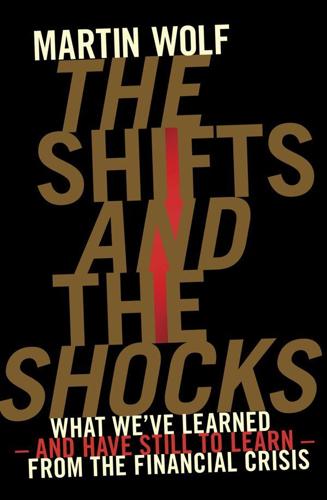
The Shifts and the Shocks: What We've Learned--And Have Still to Learn--From the Financial Crisis
by
Martin Wolf
Published 24 Nov 2015
While disagreeing, rightly, with the notion that inflation targeting could deliver stability, Minsky would have appreciated the need, stressed by Mr Bernanke, for regulatory watchfulness and with the efforts of the Federal Reserve to rescue the economy from the crisis. He would have emphasized that the economy is now in a depression mode and will take a great deal of government-led effort to escape from a more severe crisis. All these are very important lessons, to be considered further in Chapter Eight. Lerner, Chartalism and Modern Monetary Theory A final school of thought, which is called ‘chartalism’ (from the idea that money is just a token, for which the Latin word is charta), argues that the conceptual failure of the contemporary monetary and fiscal orthodoxy is not that it gives too much room for central-bank or government discretion, but that it gives far too little: thus, it goes beyond Keynes and most Keynesians.49 The essential idea is that the purpose of monetary and fiscal policy is to ensure full employment.
…
If this means there is a deficit, greater borrowing, “printing money”, etc., then these things in themselves are neither good nor bad, they are simply the means to the desired ends of full employment and price stability.’53 So long as these policies do not generate excess demand, there is no reason to fear their inflationary effects. This does not mean no constraint on monetary policy exists, but those constraints come from inflation and the associated risks of sharp declines in the value of the currency against other currencies. Today’s proponents of this set of ideas call it ‘modern monetary theory’.54 An essential point is that the private sector can be a net accumulator of financial assets if and only if the government runs a deficit or the economy as a whole runs a current-account surplus (that is, foreigners run a financial deficit). If the government runs a financial surplus in good times, as orthodox Keynesians propose, the private sector will, in the absence of a current-account surplus, run a financial deficit.
…
If the government runs a financial surplus in good times, as orthodox Keynesians propose, the private sector will, in the absence of a current-account surplus, run a financial deficit. The latter deficit will need to be financed by the creation of bank credit, which may ultimately prove destabilizing. A crucial and unquestionably correct point in modern monetary theory is this: banks do not lend out their reserves at the central bank.55 Banks create loans on their own, as already explained above. They do not need reserves to do so and, indeed, in most periods, their holdings of reserves are negligible. Only the central bank (by open-market operations), government (by spending and taxation) or private individuals (by reducing or increasing their holdings of cash) can change the aggregate level of bank reserves.

Cogs and Monsters: What Economics Is, and What It Should Be
by
Diane Coyle
Published 11 Oct 2021
I very much liked the idea that disagreements could be clearly located within a common framework. With the synthesis, I felt macroeconomics began to look more like a unified discipline—more like micro, and dare I say it, more like a science than a belief system’ (Wren-Lewis 2012b). Has this changed between 2012 and the pandemic? Controversy has raged about ‘Modern Monetary Theory’, which seems to me as an outsider to macroeconomics to be a continuation of the Keynesian-Monetarist and Saltwater-Freshwater splits. There has certainly been strong majority opinion about the right kinds of fiscal and monetary policy to apply during this Covid19 crisis. But I am not persuaded—more on this in Chapter Two.
…
Nevertheless, for all the many genuine improvements made to macro modelling and forecasting since the GFC, macroeconomists have continued to make strong claims and engage in polemic: austerity is the right policy, or absolutely the wrong one; monetary policy needs to be run according to MMT (modern monetary theory—Kelton 2020), or MMT is a half-baked, incoherent policy (Rogoff 2019). Moreover, it is almost impossible to distinguish competing theories from each other on the basis of these aggregate macro statistics. It seems clear to me that more arguments about different theories and econometric manipulations of existing data will not resolve such issues.
…
, Dani Rodrik’s web blog, 7 May, https://rodrik.typepad.com/dani_rodriks_weblog/2013/05/what-is-wrong-and-right-in-economics.html. Rodrik, D., 2018, ‘Is Populism Necessarily Bad Economics?’, AEA Papers & Proceedings, 108, 196–199. Rogoff, K., 2019, ‘Modern Monetary Nonsense’, https://www.project-syndicate.org/commentary/federal-reserve-modern-monetary-theory-dangers-by-kenneth-rogoff-2019–03, accessed 6 August 2020. Romer, P. M., 1986a, ‘Increasing Returns and Long-Run Growth’, Journal of Political Economy, 94 (5), 1002–1037. Romer, P. M., 1986b, ‘Endogenous Technological Change’, Journal of Political Economy, 98 (5), S71–S102. Romer, P., 1994, ‘The Origins of Endogenous Growth’, Journal of Economic Perspectives, 8 (1), 3–22.

Shutdown: How COVID Shook the World's Economy
by
Adam Tooze
Published 15 Nov 2021
Fiscal policy was even larger and more prompt. Central bank interventions were even more spectacular. If one married the two in one’s mind—fiscal and monetary policy together—it confirmed the essential insights of economic doctrines once advocated by radical Keynesians and made newly fashionable by doctrines like Modern Monetary Theory (MMT).47 State finances are not limited like those of a household. If a monetary sovereign treats the question of how to organize financing as anything more than a technical matter, that is itself a political choice. As John Maynard Keynes once reminded his readers in the midst of World War II: “Anything we can actually do we can afford.”48 The real challenge, the truly political question, was to agree what we wanted to do and to figure out how to do it.
…
Central banks found themselves at the center of increasingly feverish speculation about their actual and possible role. One obvious interpretation was that the monetization of giant stimulus spending was the belated and long overdue triumph of radical Keynesianism, a return to the logic of so-called functional finance first spelled out in World War II.55 The zealous new school of Modern Monetary Theory rode to prominence on the coattails of Bernie Sanders and his revival of the American left.56 In the UK, there was talk in the circles around Jeremy Corbyn’s Labour Party of “People’s QE” and radical experiments with helicopter money.57 If government spending, whether on welfare or tax cuts, was funded by issuing debt that was ultimately purchased by the central bank, why not cut out the financial sector and simply equip every citizen with a central bank account?
…
Since the massive interventions following the 2008 crisis, these questions had been posed on both sides of the Atlantic. In the United States, the Fed’s role was questioned by an array of opinions ranging from paleoconservative proponents of the gold standard, via technocratic advocates of monetary policy rules, to left-wing supporters of Modern Monetary Theory and gung ho advocates of cryptocurrencies.22 In Europe too, there was an activist community challenging the ECB to define its mandate and justify its complicity with the ratings agencies and market-based finance.23 Thoughtful central bankers asked these same questions themselves.24 The ruling by the German constitutional court stated out loud what was undeniable: the vastly expanded role that central banks had taken on since 2008 exploded the paradigm of independent central banking that had been established in the 1990s.
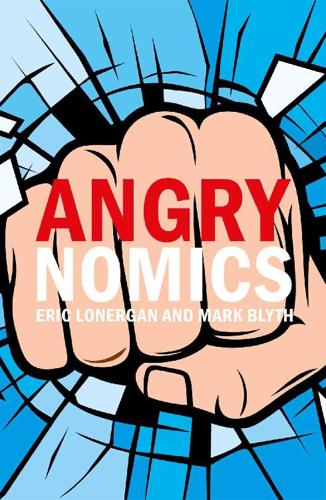
Angrynomics
by
Eric Lonergan
and
Mark Blyth
Published 15 Jun 2020
After the failure of v.2.0 the free-market economists Milton Friedman and Friedrich Hayek provided Thatcher and Reagan with a new software manual. Today, functional finance, a left-wing version of Friedman and Abba Lerner, has been revived as a fringe ideology in the US under the misnomer, modern monetary theory (MMT), but in practice there appears to be no serious ideological parallel in the current era with which to reboot angrynomics. We believe that we have serious problems, but there is no clear sense of “okay, here are the policies to go for based upon these new ideas”, which reinforces the space for regressive tribal politics.
…
You and I think they can be dramatically improved, but the evidence is overwhelming that in competitive, deregulated, developed economies, printing money to stave off deflation and prevent recessions is costless in terms of inflation. MARK: That’s a very strong claim and sounds similar to some of the ideas held by a number of US economists who advised Bernie Sanders and known as modern monetary theory (MMT). They argue for aggressive fiscal spending given structurally low inflation. ERIC: In the absence of inflation, it is true that we have a great deal more fiscal and monetary flexibility. MMT economists don’t have a credible explanation of why inflation is dead. Hyman Minsky, their intellectual forefather, was completely wrong about inflation.
…
AfD (Alternative für Deutschland) 114 Afghanistan 6 aging population 10, 13, 14, 95, 106–11 and consumption 109–10 and government bonds 138–9, 152 and inequality 56–7, 58, 107–10 and inter-generational transfer 106–107 and poverty 57, 107 as stressor 57, 91, 106, 110, 111, 116, 118 and technological change 90, 106, 122 AIG 85, 124 Amazon 96, 98, 104, 142, 143–4 Anderson, Elizabeth 176 anger 2–3, 7–9, 10, 11–12, 159, 161 misplaced 13 as opportunity 16 and play 153 private see private anger public see public anger reducing see calming strategies anxiety/stress 9, 13–14, 50, 53, 55–6, 88, 118, 161 and cognitive effort 89–90, 91 and job insecurity 95–6 three causes of 91 and uncertainty see uncertainty Apple 96, 142, 143 Aristotle 59, 153 artificial intelligence (AI) 14, 102–106, 142 Asian financial crisis (1998) 77, 140 asset ownership 130–31, 133, 136, 140–41 Atkinson, Tony 80, 173 austerity policies 2–3, 6, 15, 34–5, 41, 48, 84 and euro crisis 44–5 and low interest rates 135 Australia 125 Austria 3 baby boomers 107–108, 110, 111, 175 Bank of England 84, 103, 120, 145, 148 TFS scheme 149–50, 166 banks 1, 6, 15, 33–5, 42, 44, 48, 145–50 and capital/liquidity ratios 126 and direct support for consumption 145–8 and dual interest rates 149–50 and economic models 3, 4 failure of 119–21, 122 and helicopter money 131, 146 independence of 78, 79 and leverage see financial leverage and problem of low interest rates 120–21, 122, 131, 135 regulations on 125–6, 127, 129, 132 restrictions on 72, 77 see also financial crisis (2008) Beck, Aaron 171–2 Bernanke, Ben 6, 148 Biden, Joe 106 billionaires 4 Bitcoin 102, 103 Blackrock 165 blockchain technology 14, 103 Blyth, Mark 172, 175 bonuses 81, 85, 124 Brazil 11, 127 Brexit 4, 7, 11, 22, 24, 37, 38, 55, 117, 154 and austerity policies 41, 45 and immigration 111, 112, 114, 116 and job insecurity 100–101 Brill, Stephen 175 Britain (UK) 3, 38, 119, 155, 162, 164 aging population in 107, 110 austerity policies in 41 dual interest rates in 149–50 and EU see Brexit fear of immigration in 27 gig economy in 100 and government bonds 135, 140 government spending in 71 immigration in 111, 112, 114, 115–16 inequality in 6 interest rates in 145 nationalism in 23 Thatcherism in 75, 76 Brittan, Samuel 151 Brynjolfsson, Erik 173 budget deficits 71, 75 Buffett, Warren 130 calming strategies 12, 15, 118, 122, 123–57 and data dividend see data dividend and direct support for consumption 145–8 and dual interest rates 149–50 and economic diversity 153–6 and inequality see inequality, strategies to reduce and national wealth fund see NWF and regulations on banks 125–6, 127, 129, 132 and sustainable investment see sustainable investment Canada 125 cancer 53, 87, 88, 106 capital 4 cost of 137, 139, 153 and dispersion 97–98 as “fictitious” commodity 65 formation, rate of 108 global 40, 42, 43, 49, 50, 58 and labour 50, 60, 69, 72 and neoliberalism 75, 76, 77, 79 protection of, following financial crisis 85 versus capital 97, 98 Capital in the Twenty-First Century (Piketty) 49, 108–10 capital/liquidity ratios 126 capitalism 64–5 and commodities 65–6 capitalism as computer 11, 61–72 fixing 124–25 hardware of 62–3, 117 software of 63–4, 68–71 and unemployment/inequality 66–7 version 1.0 68–9 version 1.0 crash 64, 66, 67, 71, 73, 83, 118 version 2.0 69–73, 74, 75, 76, 116 version 2.0 crash 70–71, 73, 83–4, 118 version 3.0 74–80, 98–9, 117, 125, 140–41 version 3.0 crash 116 car industry 100–101 caring industry 104 Case, Anne 54, 176 centrism, political 38, 48, 118–19, 121, 160–61, 162 CEOs (chief executive officers) 4 Chamberlain, Joseph 66 Chile 3 China 42, 63, 64, 78, 93, 137, 151, 156 Citibank 81, 82 cities 55, 56 climate change 104, 111, 121, 129, 131, 153, 159–60 and investment see sustainable investment Clinton, Hillary 160 Coggan, Philip 172 cognitive effort 89–90, 91 Cold War 28, 48 ending/legacy of 5, 23, 26, 29, 30, 37, 116 communism 68, 71 competition/competitiveness 47, 65, 94, 95, 111, 116, 125 and technology 105 see also product market competition computer analogy see capitalism as computer constrained volatility 85 consumption, direct support for 145–8, 150–51, 160 consumption, distribution of 52–3, 58 Corbyn, Jeremy 119 corporations 6, 20, 57 and competition 95, 96 and data dividend see data dividend corruption 8, 29, 61, 130 Covid-19 163 culture 160 Czech Republic 146, 147, 155 data dividend 141–4, 160, 162 and monopolies 142, 143, 144 and privacy 141–2 and property rights 142–3 de-unionization 50, 95, 99 Deaton, Angus 54, 176 debt 75, 84, 120, 132, 145, 150 and demography 109, 111, 131 government 136–7, 151, 152 net 136 deflation 65, 69, 120, 128, 144, 148 demand management 44–5, 47, 126–7 democracy 16, 25, 29, 39, 40, 104, 117, 130 and markets 68 demography see aging population Denmark 64, 164 depression see recession deregulation 28, 40, 48, 50, 58, 75 and inflation 127 as micro-stressor 94, 96, 99, 101, 118 DGSE (dynamic stochastic general equilibrium) models 3–4 Doughnut Economics (Raworth) 131–2, 165 dual interest rates 131–2, 149–50, 174 Dublin (Ireland) 17–18 economic change 9–10, 29, 43, 153 see also fiscal reform; recession economic growth 2, 6, 41, 69, 71, 86 and demography 108–10 and immigration 116 and inequality 76, 79–80 and quality of jobs/wages 46, 47, 85 economic ideology 28 economics 12, 54–5 shortcomings of models 3–5, 6, 7 education 24, 53, 58, 135, 141 tuition fees/student loans 107, 111 electoral politics 5–6, 104 and demographics 107, 110 and tribalism 13, 22, 24–7, 29, 30, 31 electric vehicles 153 elites 2–3, 5, 6, 7, 9, 37 in cities 55, 56 and corruption 8, 29 and ethical norms 20 and financial crisis 43–4 manipulation of tribal identity by 22, 24, 61, 116, 161 policy failures of 48–9 Engbom, Niklas 175–6 environmental degradation 29, 161 see also climate change environmental and social governance 168 ethical norms 20 euro crisis 7, 37, 44, 77, 144 Europe 34, 42, 137, 140 inequality in 41, 53, 56, 58 migrant crisis in 7 tribalism in 30 European Central Bank (ECB) 34, 84, 146, 155, 164–5 TLTRO programme 147–8, 166 European Union (EU) 22, 33, 34–5, 37, 43, 119 austerity policies in 2, 36, 48 and financial crisis (2008) 82 micro-stressors in 47–8 and nationalism 154–6 and neoliberalism 76, 77 unemployment in 44–5 see also Brexit eurozone 45, 65, 83, 148, 151, 155 exchange rates 72, 134 Extinction Rebellion 8, 131–2 Facebook 27, 96, 98, 142, 143 fake news 26 Farage, Nigel 17, 161 Farmer, Roger 174 fascism 45–6, 66, 67–8, 71 fear 16, 17, 94, 113, 117, 150, 161 and media 26, 27 and politics 7, 45 financial crisis (2008) 1–2, 6, 26, 29, 30, 39, 48, 127, 163 and automation 102–103 and bail-out of banks 84 fragility of recovery from 46, 85, 89, 121 further reading on 172–3 and globalized financial system 84 and growth of populism 85 and inequality 79–80 and low interest rates 135 and regulation of banks 129 financial leverage 72, 81–3, 85, 99, 126, 157 and credit crunch 83 and interest rates 81–2 financial market deregulation 77 fiscal councils 150–51 fiscal reform 15, 150–53, 162 Fischer, Stan 148, 165 Florence (Italy) 87–8 foodbanks 6, 53 football fans 8, 19, 56 France 2, 3, 20, 55, 56, 71, 101, 154, 156 and NWF 135 Franklin, Benjamin 87 free markets 30, 69, 118 Friedman, Milton 118 full employment 40, 47, 60, 66, 71–2, 79, 85, 175 and inflation 73–4, 76 without inflation 121, 125, 126 future 101–102, 111 Garcia family, parable of 33–5, 43 Gates, Bill 130 GDP (gross domestic product) 5, 44, 76, 79, 100–101, 106, 151, 152 and NWF 135, 141 Germany 3, 11, 34, 38, 42, 62–3, 66, 151, 154, 156, 167 and migrant crisis 111, 113–14 and NWF 135 Gibley, Bruce Cannon 175 gig economy 94, 98, 99–100 global economy 12, 39–40, 50, 53, 58, 133 and nationalism 154 and neoliberalism 77 globalization 5, 39, 41, 42–3, 48, 77, 117 hyper- 40 and inequality 80 and inflation 127 and insecurity 101 and labour market 42, 43 and nationalism 154 Gold Standard 65, 67 Google 96, 98, 104, 142 government bonds 72, 131, 133, 135, 137, 138–9, 152 as insurance policies 139, 140 government borrowing 134–5, 137, 152–3 and cost of capital 137, 139, 153 and low inflation 128, 138–40, 150 and NWF 136–137, 138–40 Great Depression 40, 44, 66, 69, 120 Great Moderation 6, 120 Greece 35, 38, 44, 45, 106–07, 110, 144 green revolution see sustainable investment gross domestic product see GDP Guilluy, Christophe 55 Gulf States 133, 134 Hayek, Friedrich 118 healthcare 47, 53–4, 58, 123–4, 135, 139 and access to data 141–2 and NWF 141 and uncertainty/probability 92 hedge fund managers 4 helicopter money 131, 146, 166 Hildebrand, Philipp 165 Hong Kong 2–3, 140, 164 Hopkin, Jonathan 172 Hopkins, Ellen 123 housing 71, 113, 114, 135 Hungary 11, 23, 30 Iceland 1–2, 8, 20 immigration 5, 7, 26, 27, 111–17, 164 economic effects of 115–16 and housing/training 113, 114 and income distribution 112, 113, 114–15 and manipulation by media/politicians 111, 115 as stressor 113, 115 and technological change 106 and tribalism 95, 111, 112, 113 income see wages income distribution 43, 50, 51 and Keynesian economics 71 and neoliberalism 80, 81 independent fiscal councils 150–51 India 23, 127 individualism 29, 154 Indonesia 3 inequality 3, 4, 6, 15, 29, 30, 40–41, 43, 49–57, 58, 61, 79, 118 difficulties in measuring 50–53 and distribution of income/consumption 53–4 and financial crisis (2008) 79–80, 83, 85 further reading on 173, 176 intergenerational 56–7, 107–10 and populism 54–5 and uncertainty 49–50 inequality, strategies to reduce 121–2, 129–31, 132, 162 asset ownership 130–31, 133, 136, 140–41 and data dividend 141–4 National Wealth Fund see NWF optimal/effective 132–3 and universal basic income (UBI) 141, 144 wealth tax 130, 132 inflation 5, 40, 51–2, 53, 69 death of 126, 128 and full employment 73–4, 76, 121, 122, 125 and global financial markets 78 and interest rates 75, 81–2, 120 low see low inflation and oil prices 96–7 and printing money 78, 128, 145 and raising taxes 129 and recession 144–5 and regulation of banks 125–6, 127, 132 and stagflation 40, 74, 120, 128 inheritance 132, 133, 160 national 136 innovation see technological change insurance industry 93 interest rates 15, 33–4, 75, 81–2, 165–6 dual, and sustainable investment 131–2, 149–50 low, problem of 120–21, 122, 131, 132, 135, 146–8, 152 negative, problem of 15, 148, 149, 150 and spending 147 internet 25 investment spending 40, 60, 69 and future expectations 103 and global capital flows 77–8 and inflation 74 public sector 67, 70–71 sustainable see sustainable investment IRA (Irish Republican Army) 17 Iraq 6 Ireland 17–18, 23, 24 Islam 27 Italy 35, 37, 38, 39, 44, 66, 71, 87–8, 144, 156, 167 aging population in 110 poverty in 47 tribalism in 45–6 Japan 26, 84, 110, 137, 140, 148 job security/insecurity 34, 50, 56, 61, 94, 95–6, 100–101 and technology 102 Kalecki, Michał 60–61, 73–5, 120, 121, 127 Keynes, John Maynard/Keynesian economics 60, 66–7, 68–70, 92, 103, 118, 127, 151 General Theory of Employment, Interest and Money 66, 175 and inflation 67, 69, 128 labour market 35, 40–41, 42, 43, 44 and automation 102–106 deregulation 50, 95, 99, 122, 127 dispersion in 98–9 and full employment see full employment and immigration 115–16 in Keynesian system 71–2 and labour as commodity 59, 60, 65–6, 73, 85 and protectionism 59–61, 66 and secular stability 125, 126 and training 62–3 see also wages Lagarde, Christine 167 Lerner, Abba 118 libertarianism 63 Lonergan, Eric 174 Los Indignatios 85 low inflation 79, 134, 157 and full employment/secular stability 126 and government spending/borrowing 128, 138–40, 150, 152 and recession 144–5, 150, 162 Luce, Edward 164 Ludd, Ned/Luddites 102 machine learning (MI) 102–104 see also artificial intelligence macroeconomics 9, 13, 47, 89 failure of 119–20 and uncertainty 94 Macron, Emmanuel 162 Mair, Peter 172 markets 30, 59–61, 62, 66–7 and democracy 68 and quantity theory of money 68–9 see also labour market Mauss, Marcel 21–2 Mazzucato, Mariana 156 media 11, 43, 47 and technological change 98, 102–103, 105 and tribalism 24–5, 26–7, 29, 31, 61, 116, 161 Merkel, Angela 114 Mexico 63 micro-stressors 47–8, 53, 84, 91 and aging populations see aging populations and change 94 and fourth industrial revolution 94 and immigration see immigration microeconomics 9, 13–14, 160 migrant crisis 7, 111 Milanovic, Branko 52, 80 minimal group paradigm 21 Minsky, Hyman 128 mobile phones 53, 96, 97, 142 modern monetary theory (MMT) 118, 128–9 money, printing 78, 128, 145 monopolies 142, 143, 144 moral outrage 8, 13, 15, 35–6, 57–8, 117, 130, 161 and inequality see inequality as rational 36 and tribalism, compared 19, 20, 22, 29, 30–31, 36 triggers for 36 mortgages 34, 35, 38, 82, 111, 137, 145 nation state 39–40, 48, 50, 117, 119 national wealth fund see NWF nationalism 5, 11, 23, 29, 31, 39, 41, 116, 119 as positive 153–6 neoliberalism 4, 28–9, 37, 75–8, 122 and global capital flows 77–8 and inequality 51, 52, 53 NHS (National Health Service) 107 Nissan 100–101 Nixon, Richard 26 Northern Ireland 17–18, 23, 24 Norway 133, 134 Nussbaum, Martha 16, 35, 36 NWF (national wealth fund) 15, 132, 133–41, 143, 152, 168 and aging population 138–9 and asset ownership 133, 136, 140–41 and government borrowing/debt 136–7, 138–40 and growth of global stock market 137–8 and individual trust funds 135 and negative interest rates 134–5, 136 and risk 136, 137–8 sovereign 133–4 and trade surplus 134 Obama, Barack 29, 46 oil prices 96–7 Orban, Viktor 23, 30, 161 “Panama Papers” 2, 20 pensions 57, 63, 106–107, 138 perpetual loans 147–8 Philadelphia Eagles 20 Pickett, Kate 168 Piketty, Thomas 49, 52, 80, 108–10 play 153 Poland 11, 30 Polanyi, Karl 59–61, 64–5, 67, 175 political centrism 38, 48, 118–19, 121, 160–61, 162 political disengagement 29 political economy 12, 13 political identity 22–3, 29–30, 37, 48, 116, 117 further reading on 172 political parties 5–6, 7, 28 politics, new 15–16, 58, 160 populism 11, 27, 39 and financial crisis 86 three genres of 54–5 Portugal 35, 38, 44, 144 poverty 47, 67, 72, 80, 115 and demographics 57, 107 power 4, 48 powerlessness 9, 41 price stability 76, 79, 128, 147 private anger 7, 8, 9, 10, 13–14, 36, 117 and cognitive effort 89–90, 91 see also anxiety/stress private sector debt 131, 145 and government borrowing 134–5, 137, 138–40 investment 67, 70, 149–50, 151 liability in financial crisis 85, 127 privatization 28, 40, 96, 107 probability 91–3 product market competition 94, 95–8, 116, 125 and deregulation/privatization 96–7 and dispersion 97, 98–9 intensification of 96, 101 and technological change 96, 97–8, 99 productivity 40 and technological innovation 9, 10, 15, 102, 104–105 and wages 71, 72, 74, 76 profit margins 98, 101, 105, 143 property prices 34, 38 property rights 142, 143, 154 protectionism 59–60, 61, 66 public anger 7, 8–9, 10, 89, 98, 117–18 economic causes of 13 see also moral outrage; tribalism/tribal anger public housing 71, 113, 114 public sector investment 67, 70–71 public services 24, 115, 116 quantitative easing (QE) 146–7, 167 quantity theory of money 68–9, 78 racism 26, 54, 55, 115 Raworth, Kate 131–2, 173 Reagan, Ronald 26, 75, 118 recession 15, 29, 30, 34–5, 44, 49, 55, 58, 84, 152, 153 and dual interest rates 150 and interest rates 75, 120–21 and investment spending 60, 70, 71 and low inflation 144–5, 150, 162 and MMT 128–9 and stock markets 139, 140 see also euro crisis referenda 37 regeneration, economic 132 regional development 15, 115, 116, 149, 153, 156 Renzi, Matteo 37 risk 91–2, 127, 136, 137, 153 Roberts, Carys 174 robotics see artificial intelligence Rodrik, Dani 4, 39, 40 Russia 11, 41 Sahm, Claudia 150–51 Salvo, Francesca 87–8 Sandbu, Martin 174 Sanders, Bernie 128, 164 savings 93 scale economies 98, 99, 142 Scottish nationalism 7, 119 secular stability 125, 126, 127 service-based economy 52 Singapore 133, 134, 162 SMEs (small- and medium-sized enterprises) 164–5, 166 social democracy 63–4 social media 26, 27, 90, 98 Solow growth model 109 sovereign wealth funds 133–4 sovereignty 39 Spain 33–5, 38, 44, 45, 144 protests against austerity in 85 spending increasing 145, 147, 151 investment 40, 60 power 145 public sector 67, 70–71, 128, 151 restrictions on 41, 44, 149 sports fans 8, 19–20, 21, 25 sports industry 99 stagflation 40, 74, 120, 128 status-injury 36, 54 stock markets 63, 137–8, 139–40 stress see anxiety/stress strikes 73, 74 student loans 111 supply–demand 60, 96, 104 sustainable investment 131–2, 149–50, 152, 153 Sweden 63–4, 72–3 Syria 111, 113 Tavris, Carol 36, 171 taxes 40, 50, 57, 108, 116, 124 cuts in 34, 44, 111, 151 dodging 2, 6, 20, 132–3, 143 political opposition to 129, 130, 132, 133 raising 152 on wealth 129, 130, 132, 140 Tea Party movement 85 technocracy 37, 42–3, 48, 160–61 technological change 29, 58, 96, 109 and aging population 90, 106, 122 and competition 96, 97–8 and dispersion of returns 97 and fourth industrial revolution 94 further reading on 173–4 and inequality 50, 53 and labour market 102–104 and media 24–5, 27 as micro-stressor 88, 91, 94, 96, 97–8, 99, 101–102, 105, 116, 118 and productivity 9, 10, 15, 105, 122 and rate of diffusion 14 and uncertainty 101–102 telecommunications 96, 97, 142 terrorism 17, 18, 27 Thatcher, Margaret 75, 76, 118, 131 Thunberg, Greta 150 TLTRO programme (European Central Bank) 147–8 trade 21–2, 26, 42, 78, 154 and neoliberalism 78 trade surplus 134 trade unions 28, 42, 63, 66, 72, 73, 76, 79 trade wars 21–2, 26 training 62–3, 93, 113, 114, 141 tribalism/tribal anger 8–9, 11, 18–31, 41, 45–6, 117 and central/eastern Europe 23, 30 destructiveness of 24 and ethical norms 20 and fascism 68 and financial crisis 86, 89 and global politics 21–2, 26, 28–9 and immigration 95, 111, 112, 113 manipulation by politicians/media of 13, 22, 24–7, 29, 30, 31, 35, 61, 95, 116, 161 and minimal group paradigm 21 and moral outrage, compared 19, 20, 22, 29, 30–31, 36 and political identity 22–23, 29–30 social function of 20–21 and sport fans 19–20, 25 see also nationalism trickling down/up 79–80 trilemma, political 39 trucking industry 103 Trump, Donald 11, 22, 23, 25–6, 27, 33, 38, 119, 126, 161 and deregulation 129 election of 41–2, 54 tax cuts of 11 Turkey 11 universal basic income (UBI) 141, 144 Ukraine 11 uncertainty 9–10, 43, 49–50, 65, 91–4, 99, 118, 161 and aging populations see aging populations and emerging technologies 102–103, 106 and healthcare 92 and immigration see immigration reducing 93–4 and risk/probability 91–3 and skills development 93 unemployment 2, 30, 34, 44–5, 48, 58, 66, 72, 84, 167 and inflation/interest rates 74, 75, 125 unfairness 25, 36, 105 United States (US) 3, 38, 93, 118, 129, 164 aging population in 107–108, 110, 111 automation in 103, 104–105 financial crisis in (2008) 82–3, 84, 85 gig economy in 100 healthcare in 47–8, 53–4, 58, 106, 123–4 independent fiscal councils in 150–51 inequality in 50, 51, 53–4, 58, 80–81 Keynesian system in 71, 72–3 labour market in 42, 44, 46, 62 micro-stressors in 47–8 neoliberalism in 76 and NWF 135 stock market in 63 tribalism in 23, 25, 29 wealth tax in 130 US Federal Reserve 6, 46, 84, 108, 110, 120, 148, 151 voice, loss of 37–9, 43, 48, 58 Volcker, Paul 75, 81–2 voting 37–8 see also electoral politics wages 2, 60 and automation 105 and competition 96–7, 98 and consumption 53–4, 58, 72 distribution of see income distribution growth in, without inflation 125 and immigration 115–16 and inequality 4, 50–53, 58 and neoliberalism 76, 77 and oil prices 96–7 and productivity 72, 76 stagnation in 34, 47, 58, 80–81, 83, 84, 85 and supply/demand 65–6 Wall Street Crash 67 Warren, Elizabeth 130, 132 Watson’s Analytics 19 wealth, distribution of 4, 15, 29, 30 welfare state 71 WhatsApp 2 Wilkinson, Richard 176 wind power, investment in 150 Wolf, Martin 80, 173 World Trade Organization (WTO) 42 Wren-Lewis, Simon 151 Yates, Tony 151 “Yellow Jackets” protests 2, 20, 55, 56

Shocks, Crises, and False Alarms: How to Assess True Macroeconomic Risk
by
Philipp Carlsson-Szlezak
and
Paul Swartz
Published 8 Jul 2024
Another way is to look at former ideas and dreams for even greater stimulus—ideas and dreams that are no more. During the 2010s, chronically slow growth, ascribed to structural demand insufficiencies, triggered calls to expand the already turbocharged tactical-stimulus machine.12 Specifically, proposals for a universal basic income (UBI) and advocacy for modern monetary theory (MMT) illustrate how far this debate went.13 During the Democratic presidential primaries in 2020, both concepts moved from the fringes of the policy debate to the main stage. Both policy proposals are, in retrospect, an illustration of how unencumbered policy discourse had become from the stimulus constraints we outlined above.
…
Proponents believe that UBI would be more efficient to implement than the traditional means-tested social safety net and would receive stronger public support. People would also be free to work less and be protected from automation risk. However, critics say that UBI is too costly, that it is poorly targeted for those in need, that it disincentivizes work, and that it comes with the risk of inflation. Proponents of Modern Monetary Theory (MMT)—such as Stephanie Kelton of Stony Brook University—argue (in part) that government deficits should be the size needed to reach full employment and that deficits should lower interest rates because they expand the money supply. Critics—such as Paul Krugman, who would not disagree with the power and importance of deficit spending—argue that expansionary fiscal policy will increase interest rates unless they are stuck at the zero lower bound.
…
Critics—such as Paul Krugman, who would not disagree with the power and importance of deficit spending—argue that expansionary fiscal policy will increase interest rates unless they are stuck at the zero lower bound. See, for example, Paul Krugman, “Running on MMT (Wonkish),” New York Times, February 25, 2019, https://www.nytimes.com/2019/02/25/opinion/running-on-mmt-wonkish.html. Philipp Carlsson-Szlezak and Paul Swartz, “MMT, AOC, OMG—What Investors Should Know about Modern Monetary Theory,” Sanford C. Bernstein, April 9, 2019. Reprinted in An Economic History of Now, vol. 2, September 2019. Chapter 12 1. Volcker’s successor as chair at the Federal Reserve, Alan Greenspan, was also essential to completing the journey of taming inflation and anchoring expectations based on credible central bank policy, a process that continued into the 1990s. 2.
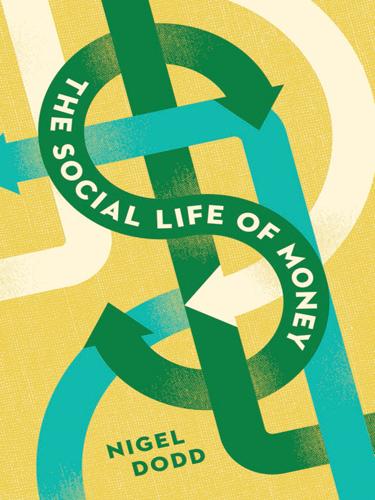
The Social Life of Money
by
Nigel Dodd
Published 14 May 2014
NEOCHARTALISM In essence, the “new” chartalists seek to combine elements of the work of Knapp and Mitchell-Innes with a theory of credit that places greater emphasis on the banking system. The leading exponent is the American economist, Randall Wray, whose approach is usually referred to as “modern monetary theory.” Wray’s work is premised on the “post-Keynesian” argument that the effective quantity of money within the economy is determined by its own internal dynamics: specifically, it is driven by the demand for credit.19 Wray’s version of this theory is “chartalist” because he places an especially strong emphasis on the role of the state, which can be summarized by the idea that taxes drive money.
…
A real Ponzi scheme takes fraud; Bitcoin, by contrast, seems more like a collective delusion.”36 Viewed simply as a currency, Bitcoin’s biggest pitfall is likely to be price deflation (and, in extremis, hyperdeflation), not inflation. This would be the conclusion reached about Bitcoin from the perspective of modern monetary theory, as discussed in Chapter 3. As the blogger “Lord Keynes” notes, “without relative price stability and an elastic supply, Bitcoins are not a viable monetary unit for any large capitalist system.”37 Although almost every monetary scholar would agree with the point about price stability, those of a more “Austrian” persuasion—not to mention the designers of Bitcoin themselves—would disagree about elastic supply: the Bitcoin software is designed to avoid such elasticity, which is regarded as a weakness of the fiat monetary system.
…
See also financial system; Wall Street system capitalist credit money, 108, 109 Carruthers, Bruce, 211–12 Carlyle, Thomas, 138 Casarino, Cesare, 222 Casascius coins, 364 cash, 1, 30n22, 36n, 38, 43, 117, 214, 286, 308; and anonymity, 227, 363, 366; as bullion, 97; versus credit, 62, 104; declining use of, 213n6; in Derrida, 183; and freedom, 227, 379; and hoarding, 128; in Keynes, 347; in Marx, 52, 54, 57, 58–59, 62, 66; in Minsky, 117–19; as the monetary base, 73; morality of, 96; and the quantity of money, 122n; as a safe haven, 88; and security, 227; as utopian, 96 cash nexus, 135 cash pools, 116 casino capitalism, 122, 132 Castells, Manuel, 221n12 castration complex, 150 Catchings, Waddill, 347 central banking, 13, 22, 44–46, 76–77, 116, 117, 213n7, 299; and bit gold, 353; and Bitcoin, 364, 371; and Bretton Woods, 70, 99, 245; and colonialism, 64; and confidence in money, 45; and the credit-debtor conflict, 109–10; and demand stimulus, 70; in the Eurozone, 107n, 129, 252, 254, 255, 261, 263, 265, 270; and financial crisis, 1–2, 4, 76–77, 127, 388; independence of, 20; and inflation, 132; in modern monetary theory, 107; and monetarism versus Keynesianism, 192; and monetary disturbances, 54n11, 70; and monetary governance, 69–70, 115, 246; and monetary policy, 121–22; in Proudhon, 352; and public debt, 217–18; and the sacred character of money, 46; and the state, 66n27, 96, 219; 378; and the treasury, 109; and war, 96.
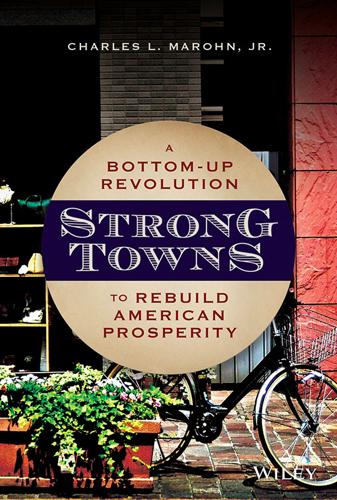
Strong Towns: A Bottom-Up Revolution to Rebuild American Prosperity
by
Charles L. Marohn, Jr.
Published 24 Sep 2019
We have brought forward more than a generation of consumption capacity and, in a classic sense, should anticipate a generation of corrective sacrifice. Right on cue, a new experiment is starting to gain popularity, one that promises to rid us of the few remaining financial constraints. Called Modern Monetary Theory, it promises to deliver growth by embracing the abstract nature of a currency backed by nothing tangible. Under this concept, the centralized government can issue a nearly unlimited amount of currency to pay for whatever lawmakers prioritize. The only constraint is the capacity of workers to mobilize resources in response and our willingness to tax wealth when things go off the rails.
…
The only constraint is the capacity of workers to mobilize resources in response and our willingness to tax wealth when things go off the rails. Regardless of the economic religion one subscribes to – be it Keynesianism, supply-side monetarism, debt capitalism, freshwater economics, saltwater economics, New Keynesianism, or Modern Monetary Theory – the common denominator is the need for more growth as measured at the national level. Ultimately, this is what is broken. Does Growth Serve Us? The United States, and by extension most of the world, suffers from a tragic reversal. We once created growth in our economy because it served us.
…
Index A Accounting, for infrastructure, 70–71 Acre, value per, 135, 138–142 Alexander, Christopher, 8 Altruism, in community living, 6–7, 26 American Society of Civil Engineers (ASCE), 65–67 Amish society, 217 Anderson, Monte, 160–161 Antifragile (Taleb), 193 Anti-fragile systems, 4, 6 Appreciation, for maintenance staff, 180–183 Arnade, Chris, 214–215 ASCE (American Society of Civil Engineers), 65–67 Assessment process, 77 Automobile reliance: development based on, 27–30 and modern city development, 111–112 productivity and, 140 B Barbell investment approach, 148–150, 150f Better Block Foundation, 159 Bezos, Jeff, 102 Bias, confirmation, 69, 74, 183–186 Bicycles, 112 Big box stores: alternative uses of sites of, 169 productivity for, 136–137 Big project mentality, 184–186 The Big Sort (Bishop), 207–208 “Bipartisan Placemaking: Reaching Conservatives” panel, 210 Bishop, Bill, 207–208 The Black Swan (Taleb), 59, 120 Blighted areas, productivity of, 131–134, 140 Boise State University, 126 Boys & Girls Club of Santa Ana, x Brainerd, Minnesota, 16f, 18f development of infrastructure in, 30–31 experimental development pattern in, 125–126 founding and development of, 16–17 productivity at downtown vs. edge of town, 134–138 traditional vs. modern development in, 131–134 Bretton Woods agreement, 90 Brooklyn, New York, 213–214 Brown, Aaron, 211 Brown, Michael, 114 Budgeting, by cities, 50–57 Building code deficiencies, addressing, 194 Buildings, complex vs. complicated, 20–23 Bureaucracy, 172 Burnham, Daniel, 122 Bush, George W., 209 C California, government decision making in, 197–198 Capital investments, return on, 171–172 Carbon-reduction benefits, 74 Carlson, Curtis, 121 “Carlson's Law,” 121 Cash flow: and debt, 98, 187–192, 188f–190f over life cycle of development project, 52–57, 55f, 56f CBO (Congressional Budget Office), 78–80 Centralization, 198 Chaos, order vs., 121–122 Chicken problem, 195 Cities, 37–62 abandonment of, 109–110 accounting for infrastructure by, 70–71 budgeting and growth in, 50–57 contracting of, 154 Detroit, Michigan, 60–62 development of Pompeii, Italy, 5–10 economic stability of modern, 104–106 engineer's view of, 11 experimental development pattern in, 126–127 filling gaps in, 160–163 and illusion of wealth, 57–60 incremental growth in founding of, 15–20 as infinite game, 38–41 and infrastructure, 44–50 maintenance required for infrastructure in, 115 modern development of, 12 revenues and expenses, 41–44 traditional vs. modern development of, 1–3 Cities and the Wealth of a Nation (Jacobs), 101–102 City Council of Santa Ana, ix, x City engineer, 177t City halls, 43–44 City planner, 177t Class: and neighborhoods, 21–22 and re-urbanization, 116 Clinton, Bill, 209 Clinton, Hillary, 63 Cognitive Architecture (Sussman and Hollander), 8 Cognitive discounting, 65 Collaboration, between government officials and citizens, 195–197 Commers, Jon, 45 Common infrastructure, 130 Community living, 199–218 differing opinions in, 206–212 and extended family, 200–201 as infinite game, 39–40 meaning in, 212–218 in neighborhoods, 202–203 in Pompeii, Italy, 6–7 walking in, 203–206 Complex, adaptive systems: human habitats as, 3–4 and incremental growth, 168 incremental growth of, 15–16, 18–19 rational decision making with, 120–123 Complex buildings, 20–23 Complicated buildings, 20–23 Complicated systems, 11–14 Confirmation bias, 69, 74, 183–186 Conflicts, dealing with, 206–212 Congress for the New Urbanism, 210 Congressional Budget Office (CBO), 78–80 Constraints: and economic stability, 93–96 and gold standard, 90 growth as, 100 prudent, for investments, 164–168 removal of, in modern world, 59–60, 96 Construction costs, 136–137 Consumption, 215–216 Costa Rica, 126–127 The Crash Course (Martenson), 108 Critical systems, 182–183 Cross-generational civic collaboration, 187 D Dallas, Texas, 159 Darwin, Charles, 8 The Death and Life of Great American Cities (Jacobs), 8 Debt: and cash flow, 98 for federal government, 186 for government, 96–100 for local government, 113–114 for place-oriented government, 186–192 for projects with quality-of-life benefits, 187 for state government, 113–114 Debt to income ratio, 97 Decision making: rational, see Rational decision making subsidiarity in, 195–198 Default, on municipal debt, 191 Deneen, Patrick, 211 Density, as urban planning metric, 128–129 Depression economics, 86–89 Detroit, Michigan, 60–62 land values in, 24 renewal of urban, 117–119 Development projects: cash flow over life cycle of, 52–57, 53f, 55f, 56f decisions about failing, 115–120 Diamond, Jared, 58, 59, 84 Dig Deep, 211 Donjek, 45 Downtown, productivity of, 134–140, 139t, 143–144 Duany, Andres, 195 Duggan, Mike, 119 Duncanville, Texas, 160 E Economic development department, 178t Economics: and benefits of infrastructure spending, 72–73 in depressions, 86–89 Economic stability, 83–106 and auto-oriented development, 29–30 and constraints, 93–96 creating, 85–86 and depression economics, 86–89 and focus on growth, 100–102 following World War II, 89–91 and government debt, 96–100 growth vs. wealth, 102–104 of modern cities, 104–106 and post-war boom, 91–93 risk management strategies for, 83–85 Edges, 7–8 Edges of city: center vs., 28 city infrastructure necessary for, 115 productivity of, 134–138, 143–144 Efficiency, designing for, 174–176 Ehrenhalt, Alan, 116 Empire State Building (New York, New York), 129 Employment, in productive places, 133 England, 83 Expenses, and revenues, 41–44 Extended family, 200–201 F Failure, slow, 110–115 Failure to Act (ASCE report), 65–67 Family, extended, 200–201 Fannie Mae, 92 Farmers, risk management strategies of, 83–84 Federal Funds Rate, 97 Federal government: debt for, 186 impact of infrastructure on, 79 Federal Housing Administration (FHA), 89, 92 Federal Reserve, 99 Feedback, in local governments, 173–174 Ferguson, Missouri, 93, 114 FHA (Federal Housing Administration), 89 Financial status, local government's understanding of, 190–191 Finished states, neighborhoods built to, 21–23 “First ring” suburbs, 94 Form-based codes, 193–194 Fragile systems, 4 Franchises, productivity of, 133–134 Freddie Mac, 92 Future, predicting needs for, 19–20, 120–121 G Gaps, in cities, 160–163 Garcia, Anthony, 158 Gas tax, 75 Gawron, Stephen, 161 Gehl, Jan, 8 “General Theory of Walkability,” 206 Gentrification, of urban neighborhoods, 117 Goals, of individuals vs. communities, 40–41 Goland, Carol, 84 Gold reserves, 94 Gold standard, as basis for trade, 90 Government debt, 96–100 Government policies, prioritizing traffic, 29 Great Depression, 87–89, 191 The Great Inversion and the Future of the American City (Ehrenhalt), 116 Great Society, 93 Growth: economic stability and focus on, 100–102 in municipalities, 50–57 as objective of local governments, 176 wealth vs., 102–104 H Haidt, Jonathan, 208, 209, 215 Hardship, response to, 172–174 Hasidic Judaism, 213–214, 217 Hemingway, Ernest, 4 Henwood, Doug, 79 Hierarchies, in local government, 174–176 Highland neighborhood (Shreveport, Louisiana), 220 Highland Park (Shreveport, Louisiana), 220 High land values, 27–30 High Point, North Carolina, 161 Highway bypass corridor, 134–138 Hollander, Justin B., 8, 9 Homeless shelters, xi Homes, changing, 20 Hoover, Herbert, 87 Horizontal expansion, in California, 197 Housing: in California, 197–198 post-war changes in, 92 preference for single-family, 144–145 Housing authority, 178t How to Live in a World We Don't Understand (Taleb), 59 Human habitats, 1–14 as complex, adaptive systems, 3–4 in North America, 1–3 spooky wisdom in, 5–10 as systems that are complicated, 11–14 Hunter-gatherer existence, 58 Hurricane Katrina, 102–103 Hurricane Rita, 102–103 I Illusion of Wealth: and constant maintenance, 152 human response to, 57–60 Illusion of Wealth phase of development, 143 Improvement to Land (I/L) Ratio, 25, 25f, 117 Improvement value, 23–25, 25f Incentives, to fix problems, 113 Income taxes, 72 Incremental changes, implementing, 122–123, 156–157 Incremental growth, 15–35 and complex, adaptive systems, 168 complex vs. complicated buildings in, 20–23 constraints on, 164 and founding of cities, 15–20 good and bad development in, 34–35 and high land values, 27–30 and neighborhood renewal, 23–27 private and public investment in, 30–34 in traditional habitat development, 2 Infill projects, 160 Infrastructure, 63–81 accounting for, 70–71 and American Society of Civil Engineers, 65–67 calculating returns on investment for, 67–69 Congressional Budget Office on, 78–80 development of, 30–34 as investment, 41–42 in modern development, 32 and municipalities, 44–50 perception of need for more, 63–65 ratio of private to public investment in, 129–130 real return on investment, 74–78 secondary effects of, 72–74 Infrastructure Cult: development of, 65–67 paper returns calculated by, 69 Insolvency, 187–192 Interstate highway system, 92 Investment(s), 147–170 barbell investment approach, 148–150 capital, 171–172 conventional vs. strong towns thinking about, 185–186, 186t in filling gaps in cities, 160–163 impact of regulations on, 194 infrastructure as, 41–42 little bets, 150–160 low-risk investments with steady returns, 150–155 prudent constraints for, 164–168 public and private, 30–34, 31f, 32f returns on, see Return on investment in Suburban Retrofit, 168–169 Italy, walking in, 203–204 J Jacobs, Jane, 8, 101–102 Japan, 76 Jimmy's Pizza, 161–162 Job creation, 49, 72–73 Johnson, Neil, 12, 13 Junger, Sebastian, 216–217 K Keynes, John Maynard, 88 Keynesian economic policies, 88 Krugman, Paul, 63, 78 Kunstler, James, 110–111 L Lafayette, Louisiana, 101, 141–144, 151 Landau, Moshe, 213–214, 217 Land value: in declining suburbs, 113 and interstate highway project, 92 and neighborhood renewal, 23–25, 25f in neighborhoods with different types of properties, 165–167, 165f, 166f and suburban development, 27–30 Learning, from previous local investments, 187 Legacy programs, 173 Lifestyle choices, 202, 205–206 “Lifestyle enclaves,” 208 Little bets, 16–18, 150–160 Local economy: as basis for national economy, 101–102 national vs., 103 Local government: changes in, to maintain economic stability, 105–106 debt taken on by, 113–114 funded by state government, 95 impact of infrastructure on, 79–80 profit run by, 37–38, 147 relationship of state and, 198 Long declines, 110–115 “Long emergency,” 110–111 Long Recession of the 1870s, 77 Los Angeles, California, xi Lovable places, 10 Low-risk investments, with steady returns, 150–155 Lydon, Mike, 158 M Maintenance: ability to keep up with, 109 cash-flow debt to cover, 188–192, 188f–190f of development projects, 52–57 of infrastructure, 46–49 need for constant, 151–154 in place-oriented government, 180–183 required for single-family homes, 112 Maintenance department, 179t Manhattan, New York, 24 Martenson, Chris, 108 Meaning, life of, 212–218 Middle class, 92, 93, 144–145 Milan, Italy, 164 Mills Fleet Farm, 134–137 Minicozzi, Joseph, 138–140, 161 “Minnesota Miracle,” 95 Mixed-use neighborhoods, 163, 169 Modern city development: as high-risk investments, 149 as lead by pubic investment, 34–35 productive places in, 131–134 Modern Monetary Theory, 99 Mortgages, during Great Depression, 88–89 Mouzon, Steve, 10, 113 Muskegon, Michigan, 161 N National Association of Home Builders, 136 National economy, local vs., 103 Natural disasters, 102–103 Neighborhoods: abandonment of, 109–110 built to finished states, 21–23 changing in post-war era, 92–93 community living in, 202–203 decline of, 113 gentrification of urban, 117 mixed-use, 163, 169 renewal of, and incremental growth, 23–27 responses to improvements in, 158 structured around religions, 214 in transition sections of Detroit, 118 Neighbors, being involved with, 202–203 New Deal economics, 87–88 New Orleans, Louisiana, 102, 182 Nixon, Richard, 94 Noncritical systems, 182 O Oak Cliff neighborhood (Dallas, Texas), 159 Obama, Barack, 63 Obesity, among Pacific Islanders, 58–59 Options Real Estate, 160 Orange County, California, xi–xii Order, chaos vs., 121–122 The Original Green (Mouzon), 10, 113 Oroville dam (California), 182 Oswego, New York, 152 Oswego Renaissance Association, 152 P Pacific Islanders, 58–59, 183–185 Paper returns on investment, 67–69 Paradox of Avarice, 104 Paradox of Thrift, 88, 104 Pareidolia, 8–9, 9f Parks department, 178t Party analogy, 34–35 A Pattern Language (Alexander), 8 Pension funds, 56–57, 70, 98 Pequot Lakes, Minnesota, 44–46 Perception, of need for more infrastructure, 63–65 Personal preferences, 144–145 Peru, 84 Place-oriented government, 171–198 and confirmation bias, 183–186 designed for efficiency, 174–176 focus on broad wealth creation by, 176–180 maintenance as priority for, 180–183 and regulations, 192–194 response to hardship by, 172–174 subsidiarity in, 195–198 understanding of debt by, 186–192 Political differences, 207 Pompeii, Italy, 5–10 Post-war boom: and economic stability, 91–93 modern city development established in, 12 Power, subsidiarity principle and, 196–198 Prayer of Saint Francis, 218 Prioritization, of maintenance, 180–183 Private development, 40 Private investment: private to public investment ratio, 129–130 public and, 30–34, 31f, 32f Private sector (businesses): response to economic hardship in, 172–173 small, see Small businesses Problem solving, 13–14 Productive places, 125–146 downtown vs. edge of town, 134–138 in past, 125–127 and personal preferences, 144–145 productivity calculations for, 128–130 return on investment, 141–144 traditional vs. modern development in, 131–134 value per acre, 138–141 Productivity, calculations of, 128–130 Project teams, 179–180 Property taxes, 49 Property value, 23–25, 25f Public health, and walking neighborhoods, 205 Public investment: private and, 30–34, 31f, 32f private to public investment ratio, 129–130 returns required for, 147 Public safety department, 179t Q Quality-of-life benefits, 187 Quantitative Easing, 99 R Railroad companies, 77 Rational decision making, 107–123 about failing development systems, 115–120 about long declines, 110–115 within complex, adaptive system, 120–123 and lack of single solution, 107–110 Real return on investment, 74–78 Redevelopment, financial productivity after, 131–134, 139–140, 139t Redundant systems, 182 ReForm Shreveport, 219, 220 Regulations: from place-oriented government, 192–194 and subsidiarity principle, 195–198 Repealing regulations, 192–193 Republican Party, 209 Request for proposal (RFP), 50 Residents, learning concerns of, 156–157 Resources: assumption of abundance of, 12–14 wasted, in modern development, 19 Retreats, strategic, 108–109 Return on investment, 141–144 calculating, for infrastructure, 67–69 for capital projects, 171–172 in cities, 44 and debt taken on by local governments, 187 low-risk investments with steady, 150–155 paper, 67–69 real, 74–78 social, 78–79 Revenues, and expenses, 41–44 RFP (request for proposal), 50 The Righteous Mind (Haidt), 208 Risk management strategies, 83–85 Roaring Twenties, 87 Roberts, Jason, 159 Roosevelt, Franklin, 87, 88 Rotary International, 203 S St.
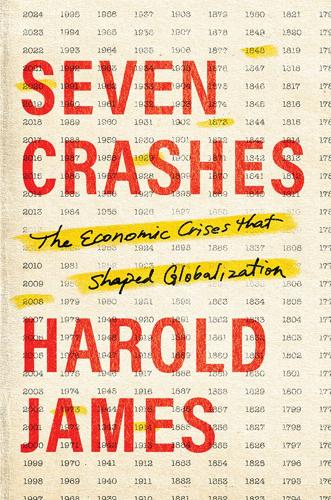
Seven Crashes: The Economic Crises That Shaped Globalization
by
Harold James
Published 15 Jan 2023
It is a vision that despite all its problems comes back resonantly at regular intervals—usually at moments of doubt about the direction of globalization. Knapp’s argumentation about how the state creates money and his explanation of the wonderful consequences is structurally similar to today’s arguments in favor of so-called Modern Monetary Theory, or MMT. Knapp thought of money in two distinct ways. First, there was domestic currency, which he called autogenic money. Instead of always highlighting only the shortcomings of autogenic money, one should occasionally also think about what it still does: it frees us from our debts; but whoever abolishes his debts, does not need to think long about whether he has also received a substance or not.
…
Second, there was international (or, as Knapp characteristically phrased it, pantopolic) money, which could only be managed through “exchange control,” or “extradronic control.”61 He absolutely rejects any idea that there is any connection between the domestic monetary situation and exchange rates. The analysis developed at the end of the nineteenth century has a modern American parallel in Modern Monetary Theory. The central basis is an idea of monetary sovereignty. The leading MMT proponent, economist Stephanie Kelton, gives the contemporary American reader a linguistically pared-down version of the Knapp view on the emancipatory advantages of domestic money that follow directly from it being a liability of the state.
…
Bonar (London: Macmillan, 1924), 8: 38. 59. Karl Theodor Helfferich, Louis Infield, and T. E. Gregory, Money (London: E. Benn, 1927), vii. 60. Howard S. Ellis, German Monetary Theory, 1905–1933 (Cambridge, MA: Harvard University Press, 1934), 37. 61. Knapp, State Theory, 226. 62. Stephanie Kelton, The Deficit Myth: Modern Monetary Theory and the Birth of the People’s Economy (New York: Public Affairs, 2020), 10 –11, 90, 207. 63. Barry Eichengreen and Ricardo Hausmann, “Exchange Rates and Financial Fragility,” NBER Working Paper No. 7418, 1999. 64. Ellis, German Monetary Theory, 38. 65. Williamson, Karl Helfferich, 26. 66.
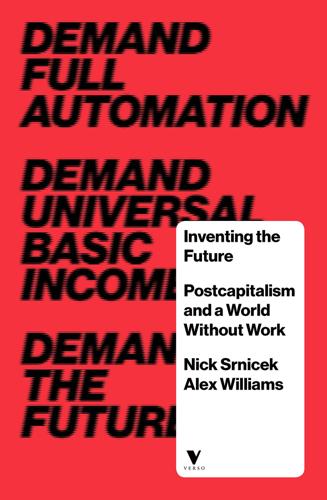
Inventing the Future: Postcapitalism and a World Without Work
by
Nick Srnicek
and
Alex Williams
Published 1 Oct 2015
Part of the reason for the rise of formalist approaches is precisely their fit with institutional requirements of higher education: they provided theories for researchers to spend time testing, textbooks and PhDs to continue a lineage of thought, and clear and transmissible principles.65 Today, the field has come to be dominated by neoclassical textbooks, and the result is that, even if professors want to pluralise the discipline, they do not have many accessible resources to hand.66 Indications that this might be changing include the creation of a heterodox textbook by two proponents of modern monetary theory.67 But more work needs to be done on this front in order to broaden the parochial horizons of mainstream economics. To support this process, there should be a movement to rejuvenate leftist economics. The dearth of economic analysis on the left could be seen in the wake of the 2008 crisis, when the most prominent critical response was a makeshift Keynesianism.
…
This recognition of the uses of quantitative methods does not mean simply adopting neoclassical models or slavishly following the dictates of numbers, but the rigour and computational elaboration that can come with formal modelling are essential for grappling with the complexity of the economy.71 However, from modern monetary theory to complexity economics, from ecological to participatory economics, trajectories of innovative thought are being launched – even if they remain marginal for now. Equally, organisations like the New Economics Foundation are leading the way in creating models of the economy that can inform leftist political goals, as well as fostering public literacy in economic matters.
…
Samuelson, ‘Understanding the Marxian Notion of Exploitation: A Summary of the So-Called Transformation Problem Between Marxian Values and Competitive Prices’, Journal of Economic Literature 9: 2 (1971). 63.Edward Fullbrook, ‘Introduction’, in Edward Fullbrook, ed., Pluralist Economics (London: Zed, 2008), pp. 1–2. 64.More information can be found on their website: rethinkeconomics.org. 65.David Colander and Harry Landreth, ‘Pluralism, Formalism and American Economics’, in Fullbrook, Pluralist Economics, pp. 31–5. 66.The most dominant textbook is by Greg Mankiw, a former Bush lackey and courageous defender of the 1 per cent: N. Gregory Mankiw, Macroeconomics, 8th edn (New York: Worth, 2012). 67.William Mitchell and L. Randall Wray, ‘Modern Monetary Theory and Practice’, 2014, pdf available at mmtonline.net. 68.For two brief but excellent exceptions, see Tiziana Terranova, ‘Red Stack Attack!’, in Mackay and Avanessian, #Accelerate. 69.For some of the existing research on this topic, see Oskar Lange and Fred M. Taylor, On the Economic Theory of Socialism (New York: McGraw-Hill, 1964); W.
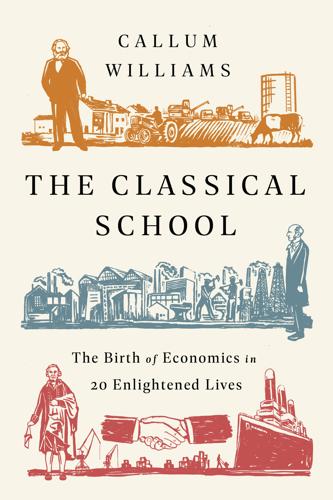
The Classical School
by
Callum Williams
Published 19 May 2020
Milton Friedman, one of the most famous economists in living memory, said this of Hume’s theory of inflation: “We have advanced beyond Hume in two respects only: first, we now have a more secure grasp on the quantitative magnitudes involved; second, we have gone one derivative beyond Hume.” Robert Lucas, also an important economist in the 20th century, described two works published in 1752, Of Money and Of Interest, as the “beginnings of modern monetary theory”. And Friedrich Hayek noted that, along with Richard Cantillon, “David Hume began the development of modern monetary theory.”1 Hume was born in 1711 to a not especially rich family in Edinburgh. He entered the university around the age of 12 but found most of the lectures boring. In his twenties Hume told a friend that “there is nothing to be learnt from a Professor, which is not to be met with in Books”.
…
The other three were, reportedly, Alfred Marshall, Cournot and Walras. Schumpeter said this in a lecture, and was almost certainly doing so in order to surprise his students. 9. I am indebted to Fred Gottheil’s lucid explanation in the formulation of this paragraph. Chapter 6–David Hume (1711–1776) 1. To be clear, Hayek is not referring to “modern monetary theory”, often shortened to “MMT”, a theory about government spending and taxation that since the financial crisis of 2008–09 has become popular among many on the political left. 2. As of 2019 Britain’s debt-to-GDP ratio was around 85%. 3. For the idea used in this example I am indebted to Robert McGee. 4.
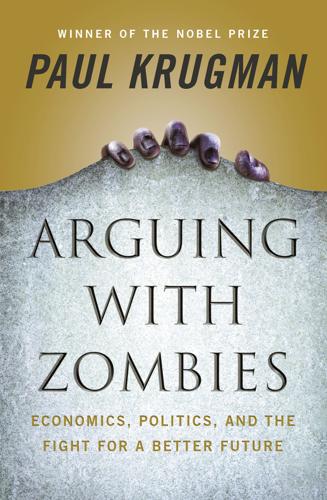
Arguing With Zombies: Economics, Politics, and the Fight for a Better Future
by
Paul Krugman
Published 28 Jan 2020
Economics,” political conservatives prefer to get their advice from outright hacks rather than real researchers of any stripe. But the freshwater side did muddle the message. At a time when policymakers needed clarity about what needed to be done, what they heard was cacophony. Oh, and there’s one final article here about so-called Modern Monetary Theory. This is an odd doctrine, which is mostly just a special case of IS-LM (described in the previous section), with a few new confusions. But its proponents don’t know that; they think they’ve come up with profound, radical insights. And a few progressive politicians have been half-convinced; I try to unconvince them.
…
So what we’ve learned about economics these past two years is that many conservative economists were, in fact, willing to compromise their professional ethics for political ends—and that they sold their integrity for nothing. WHAT’S WRONG WITH FUNCTIONAL FINANCE? (WONKISH) February 12, 2019 The doctrine behind MMT was smart but not completely right Well, it looks as if policy debates over the next couple of years will be at least somewhat affected by the doctrine of Modern Monetary Theory, which some progressives appear to believe means that they don’t need to worry about how to pay for their initiatives. That’s actually wrong even if you set aside concerns about MMT analysis. But first it seems to me that I need to set out what’s right and what’s wrong about MMT. Unfortunately, that’s a very hard argument to have—modern MMTers are messianic in their claims to have proved even conventional Keynesianism wrong, tend to be unclear about what exactly their differences with conventional views are, and also have a strong habit of dismissing out of hand any attempt to make sense of what they’re saying.
…
L., 147 mercantilism, 250 Merkel, Angela, 98 microeconomics, 407, 408 middle class: cutting benefits for, 30, 196, 309 and financial managers, 92–94 and income distribution, 266, 273 and income mobility, 277, 278 raising taxes on, 199 Mildenberger, Matto, 305, 306 Minskyism, 409 Mississippi, income inequality in, 291–92 Mnuchin, Steven, 322 moderation, instability of, 407–10 financial instability, 409–10 intellectual instability, 407–8 political instability, 408–9 Modern Monetary Theory (MMT), 125, 152, 154, 203 monetarism, 133, 409 monetary economics, 176 monetary policy, 128–29, 140, 143, 144, 153 money: conventional (currency), 412–14 cryptocurrency, 411–14 dollar cash holdings, 413 dollar notes, 413–14 fiat currencies, 414 speculative, 413 as store of value, 112 “Money and Morals” (Krugman), 260, 285–87 money managers, 92–94 money supply, central banks’ control of, 110, 112, 124, 133 “Monopolistic Competition and Optimum Product Diversity” (Dixit and Stiglitz), 396–98 monopoly power, 228, 236 monopsony power, 316–17 Moore, John, 147 Moore, Michael, 44, 45 Moore, Roy, 309 Moretti, Enrico, The New Geography of Jobs, 292 mortgage rates, 87 mortgages, subprime, 90–91, 136 “Most Important Thing, The” (Krugman), 327–28 motives, talk about, 8 Moulton, Seth, 76 movement conservatism, 297–98, 302–4, 307 definition of, 302 keeping zombie ideas alive via, 8 and Republican Party, 297, 299–301, 302, 368 and Tea Party, 303 white resentment as basis of, 343 “Movement Conservativism” (Krugman), 297–98 Moynihan, Daniel Patrick, 5 Mueller, Robert, 307 Mueller investigation, 360 Mulford, David, 405 Mulligan, Casey, 144 Mulvaney, Mick, 207, 225 Murdoch, Rupert, 297, 375 Murphy, Kevin, 279 Murray, Charles, Coming Apart: The State of White America, 1960–2010, 285–86 Mussolini, Benito, 346 “Myths of Austerity” (Krugman), 158, 160–62, 165 NAFTA, 372 NAIRU (non-accelerating-inflation rate of unemployment), 114 NASA, 163 National Association of Realtors, 84 National Climate Assessment, 332, 336 National Commission on Fiscal Responsibility and Reform, 198–200 nationalism, 343 National Older Women’s League, 198 National Review, The, 301 national security: and elections, 306 and tariffs, 251, 253, 255 NATO, 244 neoclassical economics, 132, 133, 139–40, 147 neoliberal ideology, 315 Netherlands, economy of, 184 New Deal, 107, 293, 308 New Geography of Jobs, The (Moretti), 292 New Hampshire, economic freedom in, 317, 317 New Jersey, health care in, 76, 78 New Keynesian views, 129, 139–40, 143, 145, 147 New York: health care in, 74, 318 infant mortality in, 317, 317 Medicaid expanded in, 318 New York Times, The, 348, 349 Nicaragua, and Iran-Contra, 300 Nimbyism, 291 Nixon administration, and media, 300 Nordhaus, William, 396 Norman, Victor, 398 “normative” economics, 1 Northam, Ralph, 308, 309 North Carolina: health care in, 77 Republican Party in, 359 Norway, economy of, 323 Obama, Barack: conservatives vs., 150, 208, 302, 320, 362 on health care, 53–55, 66, 339, 361 and international trade, 252 and taxes, 216, 219, 229 Obama administration: on debt and unemployment, 208 “hijacked” commission of, 198–200 and revenue growth, 225 stimulus plan of, 104, 107–8, 113–14, 115–17, 118–20, 131, 193, 206, 362 Obamacare, see Affordable Care Act O’Brien, Michael, 126 Ocasio-Cortez, Alexandria (AOC), 234, 236, 237, 320–21 Occupy Wall Street, 285 O’Connor, Reed, 367, 369 oil shocks, 126 Oklahoma, tax cuts in, 293 Okun’s Law, 113 oligarchy, 283, 349, 350 Olson, Mancur, The Logic of Collective Action, 354–55 Operation Coffee Cup (1961), 322 optimum currency areas, 177 Palin, Sarah, 54 Panama Papers, 349 Pangloss, Doctor (fict.), 135, 140 “paperclip maximizers,” 357 “Paranoid Style in American Politics, The” (Hofstadter), 346 parasites, 354–57 Paulson, Henry, 91 PBS Newshour, 169–71 Pelosi, Nancy: achievements of, 361–63 and Affordable Care Act, 35–36, 55, 361, 367 and financial reform, 362 as House Speaker, 76, 344, 362, 363 on “monstrous endgame,” 367, 369 on Social Security, 15, 35, 306, 361 and stimulus plan, 362 and trade agreement, 372 on the wall as “manhood thing,” 370 Pence, Mike, 73 pensions: defined benefit, 14 defined contribution, 14–15 401(k)-type plans, 31–32 private, decline of, 31–32 Perlstein, Rick, 302, 354, 355 Perot, H.
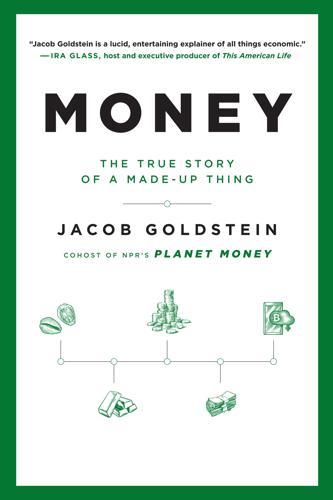
Money: The True Story of a Made-Up Thing
by
Jacob Goldstein
Published 14 Aug 2020
Or maybe, she suggested, we can just spend the money and not worry about how to pay for it. She wasn’t being glib; she was drawing on a weird new way of thinking about money that had quietly been gathering steam for decades and was suddenly everywhere (or at least everywhere money nerds gathered). It’s called Modern Monetary Theory, and while its intellectual roots go back a century or so, we can start the story in the early 1990s when a hedge fund manager named Warren Mosler flew to Rome to meet with the Italian finance minister. Mosler had recently noticed that he could borrow money (Italian lira) from Italian banks and turn around and lend it to the Italian government for a higher interest rate.
…
Almost nobody read the paper. Mosler spent decades in the wilderness (and by wilderness, I mean the Caribbean, where he lived, in part, to avoid paying taxes). He funded a few fringe economists who were working on similar ideas, and who came up with a name for this way of looking at the world: Modern Monetary Theory, or MMT for short. In the mid-’90s, a young economist named Stephanie Kelton studied at one of the programs funded by Mosler. She was interested but skeptical. She wanted to understand how government spending really worked. Not the theory, but the thing itself. She spent months studying the arcane details—reading Fed manuals, talking to people whose job was to move money in and out of government accounts at the Treasury Department.
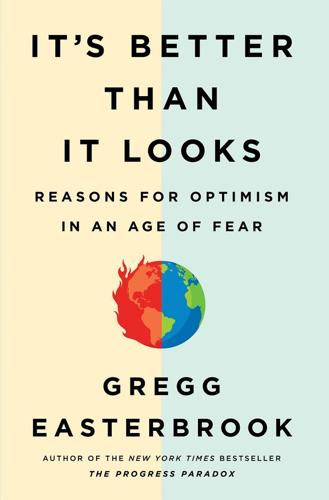
It's Better Than It Looks: Reasons for Optimism in an Age of Fear
by
Gregg Easterbrook
Published 20 Feb 2018
Tomorrow has a way of coming. Some economists view debt as an outdated concern. A school of thought called “modern monetary theory” contends that the hard-currency nations (Australia, Canada, the European Union, Japan, Singapore, Switzerland, the United Kingdom, and the United States) can borrow as much as they want and print money to make the payments. More precisely, they can declare additional ones and zeroes to make the payments. Maybe this theory is sound. Running the experiment to find out if modern monetary theory is correct would involve gambling with the bankruptcy of the Western world. Among political strategists, the saying is, “Debt doesn’t poll.”
…
See war and combat Comey, James, 184, 217 Coming Apart (Murray), 89–90 communism, 66, 164–165 economy and, 174 industrial production and, 166–167 Communist Manifesto (Marx and Engels), 4–5 conservation of energy principle, 138 constitutions, 123–124 corruption, 178, 193 in Brazil, 176–177 construction contracts and, 181 internet and, 181–182 Nixon and, 179 in US, 179–181 Cowen, Tyler, 263, 264 crime capital punishment for, 116, 155–156 cash bail for, 115 cell phone and, 113–114 in Chicago, 112–113 Clinton, B., crime bill, 110–111 decline of, 109–111, 120, 137–139 global rates of, 106, 111 law enforcement and, 110–115 lead and violent, 111–112 media and, 105, 107 political campaigns and, 105–106 sentencing for, 115–116 violent, 106 See also terrorism crime-boss government, 182 The Culture of Narcissism (Lasch), 84 death air pollution and, 30 capital punishment, 116, 155–156 of law enforcement officers, 115 leading causes in US of, 24 by prescription drugs, 34 self-inflicted, 35 technology and workplace, 155 traffic deaths, 28, 142–143, 145–146 Deaton, Angus, 82 The Decline of the West (Spengler), 197, 198 declinism, 210, 285 academia and, 201 aging and, 203 anecdotes and, 218–220 Big Sort communities and, 222–223 blame and identity groups and, 218 blame-Washington attitude and, 207–209 Brexit referendum and, 204, 209, 217 freedom of association and, 222–223 history of panics of, 200 homogamy and, 223 Kaus on, 223–224 logic of, 92 luck and, 217–218 media and, 202 national bookkeeping switcheroo and, 208 natural selection and, 202 Obama and, 200–201, 221 opinionization of America and, 214–215 Plato and, 202–203 politics and, 84, 200–202, 206–209, 220–222 power and, 221 religious attendance and, 222 Sanders and, 84, 201–202 Sharkey on, 224–225 smartphones and, 212 Sputnik and, 200 victimhood and, 204–205, 217 Western civilization and, 201 See also Facebook and social media; Trump, Donald DeConto, Robert, 233–234 deindustrialization, 29 democracy China and, 170 creativity and, 167 Diamond, L., on, 165–166, 178, 183–184, 185–186 dictatorship and, 164–166 economy and, 167–168, 170, 173–174, 193 education and, 169–170 ethics and, 174 freedom of thought and, 168–169 internet and, 175–176 inventions and inventiveness in, 172–173 recession of, 165 short-selling strategy for, 175 slavery and oppression and, 174–175 Trump lying and, 184–185 World War I and, 170–171 World War II and, 171–173 See also corruption developing world positive change in, 17, 18 poverty in, 20, 280 sanitation infrastructure in, 30 traffic deaths in, 142–143 Diamond, Larry, 165–166, 178, 183–184 two-party duopoly for, 185–186 dictatorship, 193 Carnation Revolution and, 165 coup d’état and, 166 democracy and, 164–166 education and, 169 internet and, 175–176 World War II and, 171–173 dietary habits, of West, 25, 116 disability, 249, 257 education and, 37 veterans and, 36–37, 258 disease in Africa, 25, 39 avian and swine flu, 22 chemical and biological weapons and, 26–27 Ebola, 23, 25 films and, 28 influenza pandemic, 27–28 malaria, 39 media negativity and, 24–25 MERS, 23 mosquitoes and, 39 news coverage and, 24–25 obesity as, 5, 26, 35 smoking and, 24 unstoppable contagion, 27, 28 vaccinations and, 25, 39–40 weight gain and metabolic syndrome, 25–26 See also public health Dodd-Frank Act, 92–93 Dust Bowl, 5 dynamism catastrophism and, 20–21, 221, 283 food production and, 21 East of Eden (Steinbeck), 17–18, 58, 134 Easy Rider (movie), 198, 199 Ebola, 23, 25 echo chamber, 215–216 economy, 209–210 bulk transportation and, 80–81 buying power and, 85–86, 87, 246, 249 Clinton, H., on, 67 coal mining and, 61, 76–77, 233 collapse anxiety and, 68 communism and, 174 comparative advantage and, 79–80 control and, 65–66 currency and, 69 democracy and, 167–168, 170, 173–174, 193 Dodd-Frank Act and, 92–93 education and, 169 fascism and, 66 Feldstein on, 91 globalization and, 82 golden age of, 69–70 Great Recession and, 64, 68, 97 inequality and, 84–85 inflation and, 87 infrastructure and, 93–95 Keynes on, 98–99 marriage and, 267, 268 media negativity and, 77, 79, 87–88 modern monetary theory and, 96 Panasonic and, 68–69 paper mills and, 78–79 Piketty on, 84–85 predictions and, 64 pretax income and, 84–85, 91 regulations of, 92–93 retirement economics, 31, 273–274 slow growth and, 90–92 Soviet and American, 167 state pension accounts and, 97–98 trade boosting, 79, 245–246 Trump and, 70–71 US domestic production and, 77–78 US GDP and, 84, 90–91 war and, 93, 132–134 Washington Consensus and, 66–67 Western living standards and, 88 See also market economy; middle class, US; national debt, US education, 280 book reading and, 271 in China, 170 college as, 269–271 democracy and, 169–170 disability and, 37 economy and, 169 immigrants and, 269–270 jobs and, 89–90 longevity and, 37–38 marriage and, 267 public school system and, 38, 269 skilled trades and, 270 wage and, 89–90 The Education of Henry Adams (Adams), 197, 198 Ehrlich, Paul, 5 elections.

Where Does Money Come From?: A Guide to the UK Monetary & Banking System
by
Josh Ryan-Collins
,
Tony Greenham
,
Richard Werner
and
Andrew Jackson
Published 14 Apr 2012
The country banks issued paper notes of various types and qualities which were discounted (i.e. exchanged for Bank of England notes or credit entries in banks’ accounts with the Bank of England) at relatively low rates of interest.83 Despite the Bank of England’s notes being linked to gold, currency and banking crises remained frequent and inflation rampant. A great debate began between two schools of thought over how best to solve the problem, a debate which continues to this day in modern monetary theory.* The Bullionist (later ‘Currency’) school claimed that rising prices were the fault of the Bank of England for discounting too great a volume of bills issued by private banks. Convinced of the intrinsic value and stability of gold (the commodity theory of money – Section 2.2), they called for the return of full convertibility of bank-note issuance to gold reserves.
…
INDEX A | B | C | D | E | F G | H | I | K | L | M N | O | P | Q | R | S T | U | V | W allocation, credit 105, 106, 109, 111, 141 anti-Bullionist school 43 Article 101 EC 118 Asset Purchase Facility see Quantitative Easing Babylon 34 bank accounts balances 15, 16 customers’ ownership of money in 11-12 government 153 importance of 138 Bank Charter Act 1833 43 Bank Charter Act 1844 43-5 bank deposits 15, 17, 20-1 Bank of England bank deposits, quotes about 17 bank reserves, control of 19 commercial bank money, little control over 21-2 creation of 41, 42 credit creation for public spending 143-4 demand-driven interest rates 150-1 effecting the market rate of interest 77 electronic money creation 14 foreign exchange reserves 160 Lender of Last Resort 24, 97, 103, 138 LIBOR and 70-1, 83n, 102 money supply 6, 20 Moral Suasion 47 regulation of credit 24 regulation of wider range of financial institutions 49 repurchasing agreements (repos) 78-9, 101 standing facilities 79-80 supply-driven interest rates 150-1 see also cash; central bank money; central bank reserves; liquidity Bank of International Settlements 61 Bank of Japan 80-1, 104, 112 banking central see Bank of England commercial see commercial banks confusion around 11 crises 42-3, 45 earliest systems 34-5 lending 7 liability 11-12, 16, 62, 63, 85, 106 misconceptions of 7 modern, origins of 37-42 online 52-3 perceptions of 11-14 reform, questions to consider 141-2 see also clearing system Banking school 43 banknotes liquidity of 60 sale of 72-4 bartering 29, 30, 32, 32n base money see central bank money Basel Committee on Banking Supervision (BCBS) 52, 93-4, 95 Bernanke, Ben 81n bilateral netting 165 bilateral settlement 64 Bills of Exchange 37, 38n, 137 bonds government 41, 78, 118, 120, 122, 124-5 issuance of 37, 40-2 liquidity of 60 purchase operations 81 Bradbury bills 45-6 Bretton Woods agreement 46, 50 broad money 48, 51, 60-1 building societies 16 Bullionist school 42-3, 44 capital equity 84-5, 87-8, 94 forms of 84 minimum levels required of banks 93-5 own 84, 85, 93-4 retained earnings 93-4 capital adequacy effect on bank credit creation 95 levels 100, 140 leverage ratios 96-7, 97n rules 93-5 capital flows, international 50, 52, 127-33 capitalism 32, 61, 137-8 cash decline in use of 52-3 definition 6, 14 on demand 71, 72 sale of banknotes 72-4 central bank see Bank of England central bank money banks’ liquidity requirements 74-5 comparison with commercial bank money 75-7 definition 6, 14, 60 ratio to commercial bank money 22, 75 central bank reserves definition 6, 14-15 economic growth, little impact on 22 intangibility 67 interbank payments 64-71, 102 lending to commercial banks 21 liquidity for clearing system 65 liquidity of 60 Chartalism 35, 36 Chinese economic reforms 111-12 classical economics 30-1 clearing system Bank of England 64-5 clearing banks 48-9 early banking systems and 34-5 electronic payments 16, 64 goldsmiths 38 interbank 68-9 ratio of reserves held 7 Cobbett, William 44 coinage exchange rates 45 holders and exchangers of 37 silver 37 value of 36 commercial bank money comparison with central bank money 75-7 definition 6, 15 liquidity of 60 modern, creation of 40 ratio of money in circulation 52-3 ratio to base money 22 supply, no limits to 23-4 commercial banks bank accounts with Bank of England 64-5 business loans 106, 107-8 confidence of 23-4, 140 corridor system of reserve targets 83n, 99, 150-1 credit controls 47 credit creation 6, 62-4 credit lending criteria 7-8 credit rationing 105-10 definition 13 deposits 6 determining quantity of central bank reserves 7, 21 fear of insolvency 23-4, 24 financial intermediaries 12-14, 19 IOUs see liability lending criteria 7-8 LIBOR and 70-1, 83n, 102 money creation see money creation mortgages 107 profits 87, 94 regional 42, 43-4 shadow banking 101-2 ‘special profit’ from interest on credit 74 see also capital; credit; liquidity; money creation commodity theory of money 30-3 Competition and Credit Control (CCC) 49-50, 98 compulsory cash-reserve requirements 21 compulsory reserve ratios 98 computer money 14 Consolidated Fund 153-4 Consolidated Fund Extra Receipts (CFERs) 153n Continuous Linked Settlement (CLS) Bank 165-6, 168 corridor system 83n, 99, 150-1 country banks 42, 43-4 crawling pegs 130 credit credit creation see credit creation deregulation of controls on 48-52 direct regulation of 24, 96, 110-12 lending criteria 7-8 leverage ratios 96-7, 97n rationing 105-10 see also Competition and Credit Control (CCC); goldsmiths credit creation allocation 105, 106, 109, 111, 141 bank lending 6 booms 49-50, 51 capital adequacy rules 93-5 fiscal policy links 126-7 liquidity regulation 97-100 money as 34 money created by banks 62-4 quantity theory of 109-10 window guidance 111-12 see also money creation; productive credit creation; unproductive credit creation credit theory of money 33-4 credit unions 16 crowding out 124-6 currency bands 130 Currency school 42-3 currency swaps 162 Davies, Glynn 34, 46, 50 Debt Management Account (DMA) 154-7 Debt Management Office (DMO) 122, 124, 154, 155n, 156 debts 34-5 declining marginal utility 106 deductive reasoning 33n Defoe, Daniel 10 deposits bank 15, 17, 20-1 commercial banks creation of 7 demand 15, 43-4, 64, 65, 138 facilities 79 insurance 76-7 rates 150 receipts 34, 37, 38, 39, 40 deregulation 48-52 digital money 52-3 Discount Window Facility 84 double-entry bookkeeping 63 East Asian Economic Miracle 111-12 electronic money 14, 52-3, 67 endogenous money 103-4, 106, 109 equation of exchange 31n equity capital 84-5, 87-8, 94 eurodollars 50 European Central Bank (ECB) 52, 120-1 European Union (EU) 118-21 eurozone economies 120-1, 132-3 Exchange Equalisation Account (EEA) 158-60 exchange rates foreign 127-33, 158-60, 161, 162-8 government intervention 130-2 regimes 45-53, 129-30 Exchequer Pyramid 153, 154, 156 exogenous money 103-4, 109 Federal Reserve Bank of Chicago 44 Ferguson, Niall 28, 36 financial crisis eurozone 120-1 key questions raised 5-6 North Atlantic 29 originate and distribute model of banking 100-1 as a solvency and liquidity crisis 102-3 subprime mortgages 101, 138 Financial Services Authority (FSA) 99 Financial Services Compensation Scheme (FSCS) 16, 76 fiscal policy see Government Fisher, L. 31n floating currency regimes 130 floor system 152 foreign exchange eurozone 132-3 government intervention 130-2 markets 127-9 payment system 162-8 regimes 129-30 reserves 158-60 trade and speculation 161 transactions 162 foreign interest rate swaps 162 forex transactions 162-8 forwards (forex transaction) 161, 162 fractional reserve banking 7, 37, 38-40, 44 Galbraith, Professor J.K. 58, 146 GDP transactions 24, 51-2, 83, 96, 109-10, 125-6 see also productive credit creation general equilibrium 32 Gilt Edged Market Makers (GEMMs) 122-3, 156 gilts 41, 82, 155-6 gold standard 45-7 Gold Standard Act 1925 46 Golden Period 45 goldsmiths 37, 38-9, 40 Goodhart’s law 61, 138 Government bank accounts 153-60 bonds 41, 78, 118, 120, 122, 124-5 borrowing 122-3, 124-6 intervention to manage exchange rates 130-2 linking fiscal policy to credit creation 126-7 monetary policy 42-5, 47, 49-50, 120-1, 141-2 money creation, bypassing restrictions 119-20 money creation, EU restrictions on 117-19 money-financed fiscal expenditure 144-5 money supply, effect of borrowing on 124-6 productive investment 125-6 spending 123-4 taxation 35-6, 41, 121, 139, 140 Government Banking Service 156 gross non-payment versus payment settlement method 163-4 hedging 161 Herstatt risk 164 high-powered money see central bank money hire purchase houses 48 ICP/Cobden Centre poll 11, 12 imperfect information 7, 105, 107, 140 see also perfect information Impossible Trinity 131-2 Independent Commission on Banking 13 Ingham, Geoffrey 119 Innes, Mitchell 35 insolvency explanation of 86, 87 protection against 93-7 see also solvency interest compound 39 debt, interest-bearing 144-5 legalisation of 41 savings accounts 12 interest rates crowding out 124-6 foreign rate swaps 162 government debt 119 interbank rate 102, 150, 152 LIBOR 70-1, 83n, 102 margin 12 market rate 50, 77 monetary policy and 80-1 negative 80 policy rate 50, 79, 150 intra-day clearing 68 investment banking 13 investors bonds 40-1 government 126 private 125 IOUs see liability Keynes, John Maynard 4, 33, 71 lending cycles of 18-19 facilities 79-80 fractional reserve banking 7, 37, 38-40, 44 rates 150 leverage ratios 96-7, 97n liability 11-12, 16, 62, 63, 85, 106 LIBOR 70-1, 83n, 102 liquidity Bank of England influence on 78 crisis 86-7 Discount Window Facility 84 expectations, centrality to 138-9 financial crisis and 102-3 regulation of 97-100 solvency and 84-7 loans Bank of England influence on 77 business 106, 107-8 central bank 65-6, 78-9 central bank reserves 78-9 commercial banks 6 confidence in borrower to repay 20-1, 140 credit unions 16 in economic downturn 71 goldsmiths 38 maturity transformation 12 risk rating 94 secured 106-7 securitisation 100-1 M0 see central bank money M1, broad money 60 M2, broad money 61 M3, broad money 61 M4, broad money 15, 61 Maastricht Treaty 118-19 margin 12 marginal utility 31-2 market-makers 155 Marx, Karl 32, 39 maturity transformation 12 McKenna, Reginald 4 medium of exchange 29, 35, 38, 52, 139 Mill, John Stuart 30 Minimum Lending Rate (MLR) 50 Minsky, Hyman 33 Modern Monetary Theory (MMT) 121n monetary policy early 42-5 government reforms 49-50 politics of 120-1 reform, questions to consider 141-2 review of 47 Monetary Policy Committee (MPC) 79, 150 money acceptability of 139-40 commodity theory of 30-3 credit theory of 33-4 definition 6, 138-9 efficiency of exchange 30 emergence of modern money 137-8 endogenous 103-4, 106, 109 exogenous 103-4, 109 functions of 29 as information 67 local currency 145-6 marginal utility 31-2 money creation see money creation neutrality of 30-2 role of state in defining 35-7 as social relationship 33-4, 139-40 see also cash; money creation money creation allocation of 105, 106, 109, 111, 141 capital adequacy ratios 95 commercial banks and 6, 61, 64, 139-40 confidence of banks 23-4 creation of, misunderstanding 5 endogenous and exogenous money 103-4, 106, 109 implications for economic prosperity and financial stability 7-8 link to central reserves 7 multiplier model 18-21 securitisation 100-1 shadow banking 101-2 see also credit; Quantitative Easing money supply Bank of England measures of 60-1 control of 20, 48 definition 15 effects on 71 expansion by governments 145 money creation creation see credit; money creation overview 6 money tax 74 Mosler, Warren 36 multiplier model 18-21 national currency 6 National Loans Fund (NLF) 154, 158 National Savings and Investments (NS&I) 154, 158 neoclassical economics 31-4, 51 new money see money creation non-GDP transactions 24, 109 non-PVP method 163-4 Northern Rock 103 Open Market Operations (OMOs) 78, 79, 151 Operational Lending Facility 79-80 options (hedging) 161, 162 orthodox economics 31-4 Outright Monetary Transactions (OMTs) 121 own capital 84, 85, 93-4 payment versus payment (PVP) systems 165-6, 167, 168 pegged exchange rate regimes 130 perfect information 31, 32, 77, 105 see also imperfect information policy rate 50, 79, 150 productive credit creation 24, 111, 142 see also GDP transactions promissory notes 37, 38 Promissory Notes Act 1704 40, 42 PVP systems 165-6, 167, 168 Quantitative Easing (QE) Bank of England 81 bond purchases 81 definition 80-1 effect on economy 82-3 financial assets, purchase of 152 lending, impact on 22, 23 Quantity Theory of Credit 24n, 51, 109-10, 141 real time gross settlement (RTGS) 76, 79 repurchasing agreements (repos) 78-9, 101 reserve accounts 64-5 reserve ratios 19, 20, 21, 49, 51, 98 reserve targeting 150-1 residential mortgage-backed securities (RMBSs) 100-1 retail banking 13 risk management systems 94 safe-deposit boxes 11 savings, investment of 12-13 savings accounts 60 Schumpeter, Joseph 10, 30-1 secondary banking crisis 1974 50 securities 40-1 securitisation 100-1 seigniorage 74 settlement 29, 59, 64, 76, 128n, 162-3, 167-8 shadow banking system 101-2 Simmel, Georg 28 solvency financial crisis and 102-3 regulation of 84-7 see also insolvency; liquidity speculators 161 spots (forex transaction) 162 sterling stock liquidity regime (SLR) 98-100 store of value 29, 33 subordinated debt 85 subprime mortgages 101, 138 supply and demand 31 T-accounts 63 tally sticks 34-5, 41 taxation 35-6, 41, 121, 139, 140 textbook model 18-21 traditional correspondent banking 163-4 Treaty of Maastricht 118-19 Tucker, Paul 21, 106 unit of account 29, 35, 36, 139 unproductive credit creation 24, 111 see also GDP transactions; productive credit creation On Us, with and without settlement risk 167 USA, gold standard 46-7 usury see interest value, measurement of 35 Walras, Leon 31 Ways and Means Advances 117n Wergeld 35 Werner, Richard 44, 81n, 109-10 wholesale banking 13 wholesale money markets 50 window guidance 111-12 WIR credit-clearing circle 145 * ‘Central bank money in the UK economy takes two forms: banknotes and banks’ balances with the Bank of England (reserves).
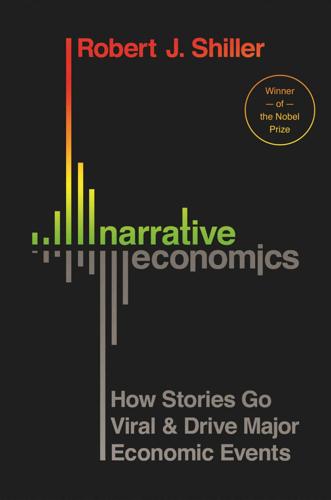
Narrative Economics: How Stories Go Viral and Drive Major Economic Events
by
Robert J. Shiller
Published 14 Oct 2019
The narrative can be spotted by searching for the words “Laffer curve” (see Figure 5.1). There are two epidemic-like curves (not to be confused with the Laffer curve itself) in succession, the first rising until the early 1980s, the second rising after 2000, when it became involved with another narrative justifying government deficits, associated with the words “modern monetary theory.” The Laffer curve looks like a simple diagram from an introductory economics textbook, with one important difference: it is very famous among the general public. The curve, which takes an inverted U-shape, relates national income tax revenue to the rate at which income is taxed, taking account of the fact that higher tax rates make people work less, thus decreasing national income.
…
See also forgetting, in epidemic model Men and Machines (Chase), 185 mentors for young people, 274 Merrill, Charles, 167 Merton, Robert K., 73, 198, 281 metanarrative, 92 metaphors, 16, 17; of economy as sick or healthy, 79 meteorology narratives, 123 Metropolis (film), 203 Mexican Americans, deported during Great Depression, 190 Michel, Jean-Baptiste, 24 Milosz, Czeslaw, 57 Mitchell, Wesley C., 125, 309n10 Mitterrand, François, 42 “modern monetary theory,” 42 Modern Times (film), 195 modesty narrative: absent from George and Veblen works, 310n1; in Japanese “lost decades,” 150; present decline in, 272 modesty narrative of Great Depression: bicycle craze and, 143; blue jeans and, 147–48; conspicuous consumption and, 135, 136–37, 139, 142–45; decline in, 150 Modigliani, Franco, 301n13 Mokyr, Joel, 71 Moley, Raymond, 114 Monetary History of the United States (Friedman and Schwartz), 73, 132–33 monetary policy: causal impact on aggregate economy, 73; studies of narratives to infer motivations of, 281; wage-price spiral narrative and, 261 monetary system: inflation and, 262; typical American’s confusion about, 170 monetary theory: invoked by bimetallism and Bitcoin, 22; “modern monetary theory” narrative, 42 money narratives, 173.
…
See also forgetting, in epidemic model Men and Machines (Chase), 185 mentors for young people, 274 Merrill, Charles, 167 Merton, Robert K., 73, 198, 281 metanarrative, 92 metaphors, 16, 17; of economy as sick or healthy, 79 meteorology narratives, 123 Metropolis (film), 203 Mexican Americans, deported during Great Depression, 190 Michel, Jean-Baptiste, 24 Milosz, Czeslaw, 57 Mitchell, Wesley C., 125, 309n10 Mitterrand, François, 42 “modern monetary theory,” 42 Modern Times (film), 195 modesty narrative: absent from George and Veblen works, 310n1; in Japanese “lost decades,” 150; present decline in, 272 modesty narrative of Great Depression: bicycle craze and, 143; blue jeans and, 147–48; conspicuous consumption and, 135, 136–37, 139, 142–45; decline in, 150 Modigliani, Franco, 301n13 Mokyr, Joel, 71 Moley, Raymond, 114 Monetary History of the United States (Friedman and Schwartz), 73, 132–33 monetary policy: causal impact on aggregate economy, 73; studies of narratives to infer motivations of, 281; wage-price spiral narrative and, 261 monetary system: inflation and, 262; typical American’s confusion about, 170 monetary theory: invoked by bimetallism and Bitcoin, 22; “modern monetary theory” narrative, 42 money narratives, 173. See also Bitcoin narrative; gold standard narrative money supply: gold discoveries of 1897 to 1914, 73; Great Depression and, 132–33 moral dimensions of economic narratives, 80; abstract economic forces and, xvii; American Dream narrative and, 155; anger at business and, 239; annoyance with boycotts and, 241; concerns about labor unions and, 258; databases of sermons relevant to, 284–85; frugality during Great Depression and, 143; opposing pairs of narrative constellations and, 113; Roosevelt’s Depression fireside chat and, 129, 278; about stock market crash of 1929, 235–36; wage-price spiral narrative and, 261–62, 266 morality in historical narrative, 37 Morgan, J.

Limitless: The Federal Reserve Takes on a New Age of Crisis
by
Jeanna Smialek
Published 27 Feb 2023
BACK TO NOTE REFERENCE 21 Chapter 15: A Year of Uncomfortable Questions Blanchard 2019. Olivier Blanchard, then an economist at the Peterson Institute for International Economics, had prominently made this argument (theoretically, not in relation to the Biden package). A more extreme version of it came in modern monetary theory, which argued that the meaningful constraints on spending were the real ones: how much the economy could produce without generating inflation. Stephanie Kelton’s book on the topic, The Deficit Myth, became a surprise bestseller when it was published in 2020. BACK TO NOTE REFERENCE 1 Summers 2021.
…
Augustus, 51–2 Heinze, Otto, 51–2 Hiteshew, Kent, 208, 350n31 Holston, Kathryn, 115 Hoover, Herbert, 159, 180 housing market and mortgage debt: financial crisis of 2008 and Fed policy, 4, 24–5; home ownership and income and wealth inequality, 224, 225–6, 348n22; inflation and housing costs, 285, 288; management by Fed under Volcker, 79; overextended housing market and mortgage lending practices, 89–92, 120–1 Humphrey, Hubert, 80 Hutchins, Glenn, 129, 129n, 199 Hutchins Center on Fiscal and Monetary Policy, 129n I income inequality, 113n, 223–9, 227n, 348nn13–14, 348n19 inflation: bond buying by Fed and, 5, 72–4, 72n, 113–14, 285–7, 286n; employment, unemployment rates, and, 6, 18–19, 22, 76–82, 96–7, 97n, 100–2, 234, 236–7, 239–44; gradualism of Fed and control over, 26–7, 73, 100–2; growth of and effects on the economy, 6, 22, 22n; lowering to support economic growth, 12; management by Fed, 4, 6, 8, 12, 18–19, 21–2, 27, 61–2, 78–9; management by Fed under Powell, 105–8, 283–91, 294–5, 301; management by Fed under Truman administration, 71–4, 72n, 339n9; management by Fed under Volcker, 79–82, 86, 94, 286; modern monetary theory and, 351n1; price increases and, 77–9, 280–1, 283, 285, 287–9, 352n10; revival of after government pandemic spending, 41; shipping and supply chain issues and, 280–1, 286–7; stimulus checks and, 281–3, 281n, 351n1; too-low inflation, 97, 340n25; 2 percent inflation on average goal, 239–44, 284, 286; 2 percent inflation target, 95–8, 102, 115, 340n25; unrest and political consequences related to, 73; wages and, 22, 79, 283, 284–5, 287–9 insurance program as market backstop, 176–7, 191, 256, 345n25 interest rates: announcement of federal funds rate change, 88–9, 89n, 340n12; bond-buying program and setting, 32n, 93; cuts by Fed during pandemic, 137–8, 142–4, 148, 150, 167; discount rate, 77, 77n, 89n; employment, unemployment rates, and, 232, 237, 239–44, 349n11; federal funds rate, 77n, 83–4, 88–9, 89n, 340n12, 341n9; lowering to support economic growth, 4–5, 21–2, 108–10, 111–16, 341n9; management by Fed, 4, 12, 61–2, 279; management by Fed under Powell, 105–8, 122, 286–7, 301, 341n22; management by Fed under Truman administration, 73–4; management by Fed under Volcker, 79–82, 83–4; market reaction to cuts in, 143–4; monetary policy, economic trends, and, 111–16; neutral rate and policy, 106, 111–12, 128; nominal rate, 22n; raising to curb risky investments, 170–1; raising to slow economic growth, 12, 18–19, 239–44, 349n11; Trump’s interest in low rates, 20 International Monetary Fund (IMF), 114, 196 internet and technology companies and the dot-com bubble, 83, 228 J Jackson, Andrew, 46–8 Jackson Hole monetary policy conferences, 238–9, 240–1, 284 January 6 riots, 281n Japan: Bank of Japan, 94; economy of, 112, 114; national debt of, 293; summer Olympics in, 186 Jekyll Island Club meeting (First Name Club), 54–6, 54n, 60–1, 200 Johnson, Lyndon, 80 JP Morgan Chase, 52, 155, 156, 157 junk bonds, 31, 152, 167, 173, 177, 209–11 K Kaplan, Robert, 206n, 243, 285, 295, 349n11 Kashkari, Christine Ong, 38–9, 201 Kashkari, Neel: candidacy for California governorship of, 38; career in private sector of, 37–8, 38n; community outreach events, opinion about, 233; family and family life of, 38–9; inflation policy concerns of, 287–8; labor market and interest rate policies of, 232, 244; labor market status, awareness of, 132–3n; Minneapolis Fed presidency of, 6–7, 37, 38–9, 198–9, 230; pandemic policy response and message of, 38–40; pandemic policy response thinking of, 198–201; PPP role of, 206; pro-worker posture of, 38, 287–8; shift in thinking of, 7; statement on Floyd’s murder and police action, 221–3; suspension of bank payments, opinion about, 215; TARP role of, 37, 38, 199, 201, 214; Treasury Department position of, 7, 37 Keynes, John Maynard, 67, 75 Keynesian doctrine, 67, 77, 79, 83, 100, 101, 234 Kohn, Don, 129n Kudlow, Larry, 105 L labor market.
…
See employment/labor market Lamont, Thomas, 53n Laubach, Thomas, 115, 128 Lehman Brothers, 90, 93, 94 Lehnert, Andreas: “cover the waterfront” strategy for pandemic response, 163–4, 167–8; financial stability division and disaster planning role of, 163–4, 163n, 212; housing market presentation by, 91; pandemic rescue program planning by, 136–7, 151–2, 158–9, 162, 212 Leonard, Elissa, 15–16, 17–18, 18n, 141n Libra, 152–3, 153n, 274 Lincoln, Abraham, 48, 287 Linton, Louise, 140–1, 141n, 193 lobby, coining of phrase, 118 Logan, Lorie, 32–3, 34, 143, 149, 334n4, 334n6 Lombard Street (Bagehot), 50–1, 336n37 M macroeconomic management, 61–2, 82, 86, 130, 230, 341n9 Main Street program, 204n, 212–14, 238, 245–9, 294, 301, 349n3 Marcus, David, 152–4 Martin, William McChesney, Jr., 74, 76–8, 81, 108 masks and face coverings, 219, 222–3 McAdoo, William, 59–60 McCabe, Thomas, 72–4 McConnell, Mitch, 138, 178, 179, 191, 192, 251–2, 267 McFadden Act, 62 meme stocks, 274, 291–2 Mester, Loretta, 154n Metropolitan Club, 11, 333n1 Mexico, 139, 145, 197, 266, 334n11 Missouri, 59 Mnuchin, Steven: allocation of money for programs, 192, 199, 208, 211, 213, 247–8, 251–2, 253–62, 347n10; background, education, and expertise of, 140–1, 170, 192–4; character and personal style of, 140, 141, 192–5; confirmation hearing of, 193–4; deregulation under, 104, 169; economic ideology of, 256–7, 294; Group of Seven call by, 142, 143; January 6 riots and loyalty to Trump, 281n; junk bond–buying discussion with Powell, 210; pandemic rescue program role of, 161–2, 165, 175–81, 183–4, 188–9, 191–5, 199, 205, 206–7, 208, 212, 214, 251–2, 345n25; planning response to pandemic with Powell, 139–40, 141; post-government career of, 298–9; Powell firing threat from, 107; relationship with Powell, 139–40, 141; role in selection of Powell, 20–1; Treasury secretary role of, 104, 192–5; 2020 presidential election and continuation of pandemic relief efforts, 253–62, 263; wealth of, 140, 298–9 monetary policy: economic slowdown and, 108–10, 111–16, 341n9; Fed Listens outreach events on, 22–3, 27–8; financial crisis of 2008 and, 4–5, 24–6, 90–8; full employment and, 22, 77–8, 80, 96–7, 97n, 101, 233–4, 239–44, 250; inscrutability of, 23, 23n; interest rates, economic trends, and, 111–16; modern monetary theory and inflation, 351n1; pandemic and, 4–5, 29–35, 38–41, 238–43; Powell role in as Fed governor, 17–18, 129; review of under Powell, 21–2; Taylor rule, 341n22; voting on by Fed governors and regional bank presidents, 13, 13n, 130 money/currency: Bretton Woods system and linking dollars to gold, 75–6; cash supply and flow management by Fed, 3, 12–13; cash supply and withdrawals at start of pandemic, 39–40, 335n10; concept and history of, 44–6, 335nn11–12; control over by Fed and political goals, 8–9; creation by Fed, 5; creation of during pandemic, 4, 176, 185–6; Federal Reserve note, 57; fiat currency, 48–50, 272; global financial system with dollar at core of, 75–6, 82, 196–8; greenback currency, 48–50; impact of pandemic on currency markets, 141; money supply as driver of economic outcomes, 79–80; national bank notes, 48, 53; pandemic and role of the dollar in global finance, 196–8; specie, 49, 335n11.

The Corona Crash: How the Pandemic Will Change Capitalism
by
Grace Blakeley
Published 14 Oct 2020
: Neoliberalism and Winners and Losers of International Debt Crises’, Loyola University Chicago Law Journal 42, no. 4 (2011): 668–83; Adam Tooze, ‘Notes on the Global Condition: Of Bond Vigilantes, Central Bankers and the Crisis, 2008–2017’, adamtooze. com, 7 November 2017. 24 ‘Fears Grow over Bangladesh’s COVID-19 Response’, Al Jazeera, 23 March 2020. 25 Stephanie Kelton, The Deficit Myth: Modern Monetary Theory and the Birth of the People’s Economy, New York: PublicAffairs/Perseus, 2020. 26 Mahir Binici and Mehmet Yörükoğlu, ‘Capital Flows in the Post-Global Financial Crisis Era: Implications for Financial Stability and Monetary Policy’, BIS Working Papers 57, Basel: Bank for International Settlements, 2015, 319–43. 27 Gabriel Chodorow-Reich, ‘Effects of Unconventional Monetary Policy on Financial Institutions’, Brookings Papers on Economic Activity, The Brookings Institution, vol. 48, no. 1 (Spring 2014): 155–227. 28 Martin Mühleisen and Mark Flanagan, ‘Three Steps to Avert a Debt Crisis’, IMF Blog, 18 January 2019, blogs. imf.org. 29 ‘The Great Lockdown: Worst Economic Downturn Since the Great Depression’, IMF press release, no. 20/98, 23 March 2020. 30 Nick Dearden, ‘The Global South’s Coronavirus Debt Crisis’, Tribune, 10 May 2020, tribunemag.co.uk. 31 Rehman Sobhan, ‘Structural Maladjustment: Bangladesh’s Experience with Market Reforms’, Economic and Political Weekly 28, no. 19 (8 May 1993): 925–31. 32 Amy Kazmin, ‘Modi the Reformer Reappears as Coronavirus Hits India’s Economy’, Financial Times, 15 May 2020. 33 See IMF, Policy Responses to Covid-19: Policy Tracker, Washington, DC: International Monetary Fund, 2020. 34 Ibid. 35 UNCTAD, Digital Economy Report 2019: Value Creation and Capture: Implications for Developing Countries, Geneva: United Nations Conference on Trade and Development, 2019. 36 A global debt jubilee was partially achieved in 2000, when the Jubilee Debt Coalition – a network of charities and religious organisations – pressured the UK government to write off a substantial portion of the debts owed to it by Global South states.
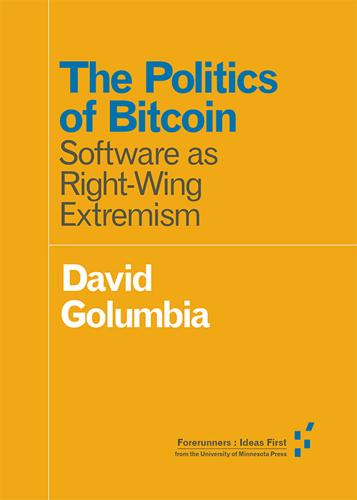
The Politics of Bitcoin: Software as Right-Wing Extremism
by
David Golumbia
Published 25 Sep 2016
Indeed, the story told so far has if anything tilted the story too much in Bitcoin’s favor. For while the textbook account of money includes the three critical functions we have mentioned, the majority of expert economic theory simply defines money as currency that is issued by a sovereign government. This theory is known as “Modern Monetary Theory” (MMT) or “neochartalism” and has its roots in economics going back at least to John Maynard Keynes, whose views have perpetually been a major target for every sort of attack from right-wing thinkers. According to this view, the difference between money and currency is that money is currency issued by the state and indicates the form of currency in which taxes must be paid.

MegaThreats: Ten Dangerous Trends That Imperil Our Future, and How to Survive Them
by
Nouriel Roubini
Published 17 Oct 2022
As a result, the equivalent of some $18 trillion in government bonds, with maturities of up to ten years in Europe and Japan, had a nominal negative return in 2021: lenders paid borrowers to hold their lent money. In some Scandinavian countries even the interest rate on home mortgages was negative. To be sure, lavish “helicopter drops” of cash have offset the worst impact of an economic shutdown. Advocates like to talk about the virtues of Modern Monetary Theory, or MMT for short. MMT seems to amount to governments running large, permanent fiscal deficits with money printed by the central bank, an extreme variant of quantitative easing. To skeptics like investor Jim Rodgers, who worries about corrosive effects, MMT stands instead for “More Money Today.”
…
Yet there are several unintended consequences of all this precedent smashing. For one, it drew monetary and fiscal policy closer together. The distinction between them became even fuzzier when many mainstream scholars started making the case for printing money to close budget shortfalls under the banner of Modern Monetary Theory (MMT). Discussions of MMT often refer to “helicopter drops” of money. Jerome Powell made clear in public and private that the Fed needed Congress to act—Fed lending wasn’t sufficient; federal spending was also essential. And Congress, under both the Trump and Biden administrations, responded with massive outlays: under Trump two acts of stimulus, of $2 trillion and $900 billion in size in 2020; under Biden, a stimulus of $1.9 trillion, followed by an infrastructure plan of about $1 trillion and not-yet-legislated plans of further trillions of social infrastructure spending.
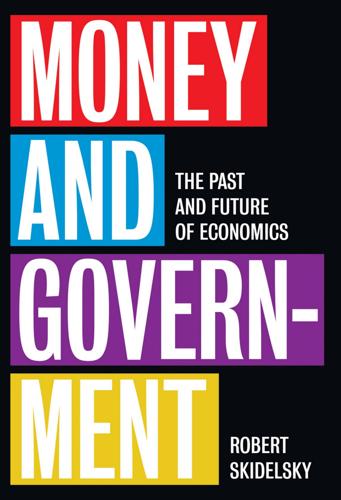
Money and Government: The Past and Future of Economics
by
Robert Skidelsky
Published 13 Nov 2018
Reciprocal obligations could be discharged by tokens of purchasing power, rather than by actual transfers of physical goods, the tokens expressing customary valuations of the physical obligations. If this model of the earliest economies is accepted, the origin of money is related primarily to the operations of public finance, not of markets. Promises come before coins: coins are merely tokens of promises. Neo-chartalists of ‘modern monetary theory’, such as Warren Mosler and Randall Wray, go further: the state doesn’t need to tax in order to spend; it needs to spend in order to tax. Neo-chartalists tantalize you with such questions as: how can you pay taxes if the government has not already spent the money? The state’s debts are the source of its revenue: the more it spends the more revenue it can collect.
…
(But then there would be no government either!) But it does 246 t h e di s a bl e m e n t of f i s c a l p ol ic y not follow that the money it spends automatically returns to it as tax revenue. As Anwar Shaikh rightly notes: ‘There is no such thing as a money of no escape.’55 The value of modern monetary theory is not in trying to prove that government can issue debt without limit, but in emphasizing that the ‘bonds of revenue’ are far looser than the deficit hawks claim. 247 9 The New Monetarism ‘The government’s real case is that expansionary monetary policy will offset any contractionary influence of the Budget.’
…
Currency School vs Banking School debate, 44, 49–50 during economic deterioration (1969–73), 165 Fed’s ‘Reserve Position Doctrine’ (1920s), 103–4 and financing of deficit, 245, 246–7, 285 four key monetary debates, 40 and Friedman, 104–6, 177–83, 205–8 and Great Depression, 104–6, 183 ‘hard’ and ‘soft’ money schools, 39, 39, 41–2, 44 during Keynesian full employment phase (1945–60), 145–6 and Keynesian revolution, 98, 100–101, 114–15, 116, 124–5, 137, 138–9, 145–6, 173 and Lucas, 195, 208–11 ‘money multiplier’, 35, 64, 146, 179, 185, 258–9, 268–9, 277–8, 280 in new macroeconomic constitution, 352 and nineteenth-century theory, 9, 29, 44–52 pre-crash orthodoxy/mindset, 2, 146, 212–13, 221–4, 229–35, 249–53, 310–16, 348 primacy under New Consensus, 200–201, 212 ‘real bills’ doctrine, 46–7 as right wing preference, 138–9, 181–2 transmission mechanism of, 64, 146, 250, 250–51, 277–9, 283 Wicksellian, 69–70, 102, 251, 255, 358–9 see also quantitative easing (QE) monetary reformers (first third of twentieth-century), 37, 44, 60–72, 99–106, 116, 124, 125, 129, 177–8, 200, 277, 280 money Aquinas on, 28–9 barter theory, 19, 21, 23–4, 37–8, 45, 63, 69, 384 bartering savage theory, 24 chartalist theory, 23, 25–6 the classical dichotomy, 21–3, 24–5, 36, 66, 121, 183, 201 class-struggle theory of, 27–8 credit theory, 23, 24–7, 33, 34, 39, 100–101, 102–3 creditors and debtors, 29–32, 37, 39, 47 determination of value, 21–2, 25–7, 28–30, 36–9, 41–5 Friedman’s ‘stable demand function’, 179 hoarding of, 35–6, 105, 115, 116, 121, 127–8 Keynes’ ‘monetary theory of production’, 22–3 Keynes’ ‘speculative demand for’, 36, 120, 179, 183, 261 Keynes’ view of, 1, 25, 36, 115, 119, 121 law of ‘diminishing marginal utility’ of, 290–91, 292 and Mill, 19–20, 21, 36 ‘modern monetary theory’, 26 ‘money illusion’, 36–8, 182, 206 as most liquid form of wealth, 36 origins of, 20, 23–5, 39 ‘real’ analysis of classical school (‘money as veil’), 22, 24, 37, 45, 84–5, 121 Smith’s metallist theory, 23–4, 25, 27, 28, 38–9, 44 standard of value as political question, 41, 43–4 theory of, 21–8, 39, 121, 384 see also Quantity Theory of Money (QTM) 482 i n de x and theory of value, 21, 23 in tributary economies, 26 money supply ‘base’ or ‘narrow’ money, 35, 46, 61, 105–6, 165, 185–6, 187–8, 265, 268, 277–8, 279, 280 bimetallist controversy, 44, 50–52 ‘broad’ money, 35, 105–6, 165, 168, 179, 185, 186, 188, 249–50, 268, 268–9, 269 broad money, 275–6, 279–80, 281 in classical theory, 1, 38–9, 47 debasing the coinage/printing of money, 28–9, 32, 41–2, 45–6 exogenous or endogenous question, 35, 39, 100, 183 and Friedman, 177–83 Heath abolishes quantitative controls (1971), 168 late-medieval rediscovery of banking, 33–4 massive expansion worldwide (1969–73), 164–5 measures of, 34–5, 71, 249, 279–80 Smith on, 38 velocity of circulation, 38, 62–5, 71, 101, 129, 146, 168, 179, 187, 268–9, 283–4, 285, 287 Victorian fiscal constitution, 9, 29, 59, 76 see also Quantity Theory of Money (QTM) Mont Pelerin Society, 176–7 Montagu, Sir Edwin, 107 Monte dei Paschi di Siena, 364 Moody’s (CR A), 329 mortgage-backed securities (MBS), 256–7, 274, 320–21, 323, 327, 328 Mosler, Warren, 26 Müller-Armack, Alfred, 153 Mummery, A.

Human Frontiers: The Future of Big Ideas in an Age of Small Thinking
by
Michael Bhaskar
Published 2 Nov 2021
Most radical policy proposals are decades old: nationalisation; privatisation; fiscal tweaking with tax rises and tax cuts. This paralysis means ‘new anxieties’ are faced with ‘old ideologies’.19 Some new ideas get through: nudge unit governance for example, or perhaps nascent concepts like Universal Basic Income or Modern Monetary Theory.20 But in general, despite progress, we lack ideas to solve questions as diverse and significant as loneliness, homelessness, social care, care of the elderly and child care.21 Even the most energised debates – about race, gender or the environment, for example – have their roots in the 1960s and earlier.
…
The numbers are poor compared to preceding decades and no better than preceding centuries. 18 Fukuyama (1992). Psychologically satisfying is here meant in the technical sense Fukuyama meant it: liberal democracies enable recognition, a core human desire, in ways other forms of political organisation do not. 19 Collier (2018) 20 Other candidates might include Modern Monetary Theory, or Charter Cities. 21 See for example the work of Geoff Mulgan on this and the absence of ideas in the arena of the ‘social imagination’. 22 Some may of course question whether this is a good thing; but regardless, it reflected a novel agenda and ambition realised at scale. 23 Critiques of science of the kind presented here are not necessarily recent – see for example Platt (1964). 24 Sarewitz (2016) 25 See for example Wilson (2017), p. 192 26 Landhuis (2016) 27 Ibid. 28 Gusenbauer (2019) 29 Ibid. 30 Arbesman (2012) 31 See Fortunato et al. (2018) 32 Collison and Nielsen (2018) 33 Ibid. 34 Horgan (2015) 35 Fortunato et al. (2018) 36 Mallapaty (2018), Chawla (2019) 37 Wang and Evans (2019) 38 Cowen and Southwood (2019) 39 Rockey (2015) 40 Lakatos (1980) 41 See for example Ritchie (2020) for more detail. 42 Baker (2016) 43 Ritchie (2020) 44 See ibid and Ioannidis (2005) for one of the earlier papers that rang the alarm bell. 45 Arbesman (2012), p. 108 46 Smolin (2008), p. 66.
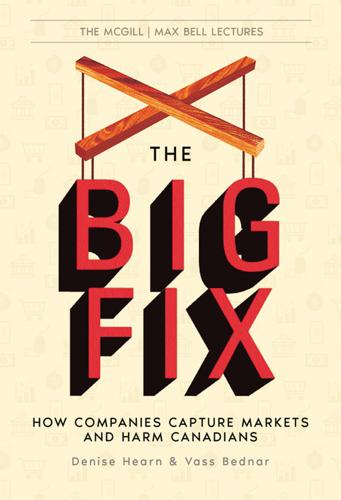
The Big Fix: How Companies Capture Markets and Harm Canadians
by
Denise Hearn
and
Vass Bednar
Published 14 Oct 2024
American Economic Liberties Project, February 25, 2020. https://www.economicliberties.us/our-work/the-illusion-of-choice/. 23 CBC Radio, “Wondering Why Your Glasses Are So pricey?” Cost of Living, September 20, 2020. https://www.cbc.ca/radio/costofliving/the-cost-of-living-on-the-cost-of-stuff-payday-loans-baby-formula-glasses-and-modern-monetary-theory-1.5715939/wondering-why-your-glasses-are-so-pricey-one-company-controls-almost-everything-about-them-1.5721176. 24 EssilorLuxottica, “Annual Shareholders’ Meeting 2024.” 25 Lieber, Chavie, “LensCrafters, Ray-Ban, and Designer Brands All Mark up Their Glasses.” Vox, March 6, 2019. https://www.vox.com/the-goods/2019/3/6/18253555/eyeglasses-cost-lenscrafters-essilor-luxottica. 26 Lazarus, David, “Column: How Badly Are We Being Ripped off on Eyewear?
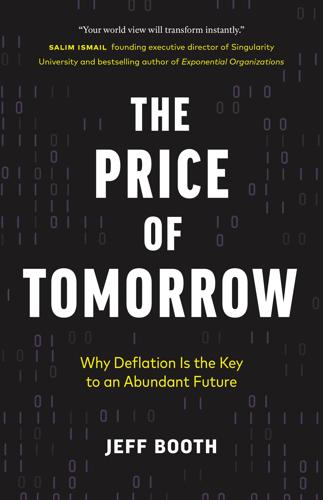
The Price of Tomorrow: Why Deflation Is the Key to an Abundant Future
by
Jeff Booth
Published 14 Jan 2020
Perhaps that is why almost all current proposals today land in two overarching camps on opposing sides of the political spectrum: on one side, those that use lever 3, and on the other side, those that use lever 4. The solutions in them are largely similar in their outcomes but have many different forms. Let’s look at the two sides one at a time. Continued low or negative interest rate environment, central bank printing, modern monetary theory, or other guarantees to keep the party going The greatest irony of this camp is that it has the highest belief in a free-market economy and capitalism but at the same time doesn’t realize that free-market capitalism is not what is happening today. Many of the current policies around the world could be categorized here, along with many other proposals on the table.
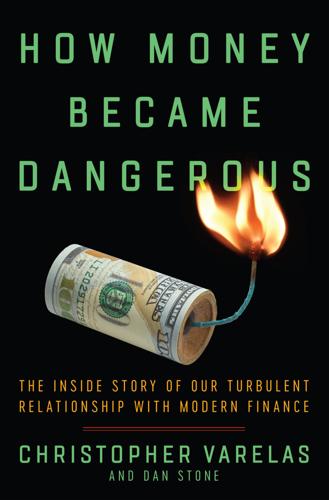
How Money Became Dangerous
by
Christopher Varelas
Published 15 Oct 2019
Which can only make one wonder, why have we not assessed this danger with more concern and diligence? To the contrary, there seem to be growing voices arguing for the expansion of borrowing and government spending to achieve various policy objectives. Nobel Prize winners and politicians alike have put forth theories including the revival of a century-old idea called Modern Monetary Theory (MMT), which argues that government’s monopoly control over money allows, if not requires, that any and all fiscal policies be undertaken to ensure full employment—for example, printing as much currency as desired, without cause for worry that such an action would lead to inflation or possibly the loss of systemic financial integrity.
…
Filter, 153, 162, 164–68, 172, 179 Weill and, 188–89, 196 see also hostile takeovers meritocracy, 60–61, 310, 362 Meriwether, John, 57, 59, 60, 62–64, 66–68, 76 Merrill Lynch, 51, 190, 191, 196, 207, 345 Citron and, 316, 318, 319, 343, 344 Messier, Jean-Marie, 168–70, 175–76 Heckmann and, 168, 169, 173, 174 Messih, Robert, 198–200, 212 Mestre, Eduardo, 119–23, 136, 138, 145–46 Meyer, Ron, 169 Microsoft Windows, 218–19 Milken, Michael, 91–94, 96–97, 104 background of, 91–92 at Drexel, 91–94 indictment and prison sentence of, 92, 96, 104 Predators’ Ball of, 93–94 reinvention of, 104 Millennials, 294 Miller Brewing Company, 162 mission statements, 103 Modern Monetary Theory (MMT), 330 money laundering, 31–33, 38–40 Monkey Bar, 70–71 Morgan, Cristina, 199 Morgan Stanley, 133, 196, 215 cocktail reception of, 69–70 Morgan Stanley Dean Witter, 209 mortgage market, 21 mosque shooting, 304–5 Mozer, Paul William, 55–58, 62, 64, 67–69, 72, 74–76, 262 Mozer rule, 56 MTV, 302 Murray, Angela, 204 Napoleon III, 169 National Institutes of Health, 303 National Investment Bank, 5 Netflix, 160 Newsday, 137 New Yorker, 196, 212, 306 New York Post, 290 New York Stock Exchange (NYSE), 176, 268 New York Times, 59, 167, 209, 302, 303–4 New York Times Magazine, 84 New Zealand: mosque shooting in, 304–5 preppers and, 306–7 Nietzsche, Friedrich, 44 9/11 terrorist attacks, 176, 235–36 92nd Street Y, 207–8 Nokia, 202 Northrop Corporation, 113, 118–19, 125 B-2 Stealth Bomber, 118, 136, 138 Grumman’s negotiations with, 119–24, 136–38, 142–43, 145–46 Northrop Grumman Corporation, 146 Notre Dame, University of, 151–53 NYFIX, 242 Obama, Barack, 340 Occidental College, 4, 11, 81, 83, 89, 99, 111, 287 Oftelie, Stan, 334 Operation Desert Storm, 114 Operation Polar Cap, 39 Oracle, 261 Orange County, Calif., 4, 312–19, 323–28, 330–36, 342–45, 351–52, 365 Citron in, 315–20, 324, 326, 343–45, 352, 367 pension system in, 345 Project Robin Hood in, 331–33 Orange County Register, 315 Orange County Transportation Authority (OCTA), 334–35 Orwell, George, 210 Osnos, Evan, 306, 307 other line, see privilege ownership, asset division and, 246 Oyster Bay golf outings, 134–36 PAIX (Palo Alto Internet Exchange), 223, 228 Partinoli, Dave, 185–86 Patriot Bank, 372–73 Paul, Jake, 282–83, 295, 299, 301–2, 305 Paul, Logan, 282–84, 293–96, 299–303 PayPal, 233, 307 Pendergrass, Kristina, 336 pension systems, 335–39, 353–54, 359 accountability and, 369 in Orange County, 345 oversight or review board for, 366–67 in Stockton, 335–36 Penthouse, 244 PeopleSoft, 261 Perez, Monalisa, 303–4 pets.com, 229–30 PewDiePie, 304–5 Pfefferman scandal, 31 phone minutes: as currency, 245 see also prepaid calling cards Podesto, Gary, 320, 321 pooling, 170–72, 176 pornography, 218, 219, 233, 244 Danni’s Hard Drive site, 226, 227, 231–33 portfolio insurance, 37 poverty, 349 Predators’ Ball, 93–94 Predators Ball, The (Bruck), 93, 94 prepaid calling cards, 220–21, 223, 245, 246 SmarTalk, 218, 221–23, 244 preppers (survivalists), 305–8 Pretty Woman, 98–103, 106 Prince, Chuck, 208–10, 211 private companies, 177 Private Jet Studio, 303 privilege, 280–310, 362 air travel and, 299–300 Disneyland and, 289–90 education and, 291–92 extended across generations, 291 healthcare and, 291 social media influencers and, 283–84, 291–99, 301–3, 305 Project Passion culture committee, 204–6, 211, 264–65, 365–66 Project Robin Hood, 331–33 Purcell, Tom, 133, 325 Purpdrank, Jerry, 295 quarterly earnings expectations, 177–78 of Lucent, 194 of U.S.
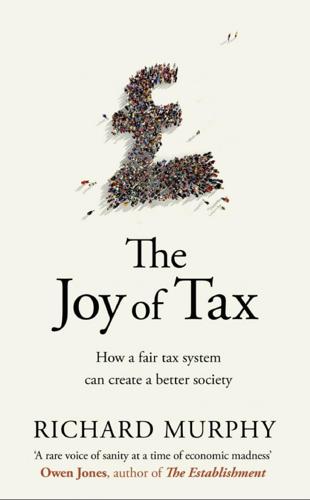
The Joy of Tax
by
Richard Murphy
Published 30 Sep 2015
There are, in fact, five functions that tax can fulfil when it is seen as a cash reclamation process, all of which are about the government putting its economic policies into effect through its control of this money recovery exercise. The first of these other reasons (and so reason no. 2 in the overall list) for raising tax is that, as the modern monetary theory school of economic thinking suggests, unless a government demands that taxes be paid using the currency that it issues there is no obvious reason for people to use that government-created currency in the economy it is trying to manage. In other words, the reason for demanding payment of tax is to make the local currency, issued, backed and controlled by the government, the only useful currency in that place.

The Price of Time: The Real Story of Interest
by
Edward Chancellor
Published 15 Aug 2022
Never outside wartime had governments run up so much debt, borrowed so cheaply or spent so quickly. Never had governments closed down large parts of their economies while maintaining, and even in some cases boosting, people’s incomes. The world had indeed turned upside down. Money-printing and public spending were supported by a new school of economics. Exponents of Modern Monetary Theory claimed that money was a creature of the state. Once money’s essential nature was understood, a number of radical conclusions followed. Governments could never go bust. They didn’t even need to raise taxes or issue bonds to finance their spending but could simply print more money. Governments could pay off the national debt tomorrow if they wanted.
…
F., 96–7 McTeer, Robert, 113 measurements, standardized, 6, 10–11 Mehrling, Perry, 88, 90*, 143* Melchior, Carl, 94 Mellon, Andrew, 88, 140, 141–2 Menger, Carl, 95† Mersch, Yves, 192 Mesopotamia, ancient, 3–4, 5–8, 10–12, 13, 13, 14–15; attitudes to usury, 17–18, 200, 219; Enmetena document, 8–9; Hammurabi’s Code, 9–10; ‘regulatory arbitrage’ in, 9–10, 14, 24 Messer (industrial gas supplier), 245* metals, precious, 64, 168, 174, 255; Law severs link with money, 47, 49–50, 55–6, 55†; and Locke’s view of money, 41, 42; money backed by, 41, 42, 49–50, 57, 85*; money supply in ancient world, 12–13; silver loans in ancient world, 6*, 9*, 10; from South America, 49, 168 metrics/targets, 119–20; Campbell’s Law, 120–21; Goodhart’s Law, 105, 121; limitations of, 120–23, 120* Mexico, 262 Middle Ages, 6, 18, 25, 35, 36; banking revolution in Italy, 22–3, 35; expansion of trade and industry, 19, 21–3, 25–6; interest in medieval Italy, 23, 23, 35; ‘regulatory arbitrage’ in, 23–4; scholastic attack on usury, 18–20, 23–4, 25 Mieno, Yasushi, 106–7 Milken, Michael, 204 Mill, John Stuart, 179–80, 188 Miller, Adolph, 92 Mills, John, 74 Minsky, Hyman, 138–9, 143, 232‡, 233, 284, 285 Mirowski, Philip, 119, 131, 206, 206* Mischel, Walter, 29 Mises, Ludwig von, 29–30, 31*, 32, 95 Mississippi bubble: and advances in globalization, 263; buybacks during, 53; Company takes over French national debt, 50, 53, 60; contemporary verdicts on, 57–8, 60; Defoe on, 46, 56, 57, 60, 308; and depreciated government debt, 50, 51–2, 59, 65, 69; and excessively low interest rates, 46, 52–3, 54, 58–9, 60–61, 65, 68, 69, 172–3, 178, 202–3, 273; and extreme volatility of share price, 178; high living during, 54–5; impact on French class system, 51, 54–5; and the ‘madness of crowds’, 46, 50–51; modern economists’ verdicts on, 59–61; and money supply, 46, 50–54, 56–7, 58, 60–61, 286; realizing of profits, 55–6, 56†, reasons for collapse/failure, 55–9; and Royal Bank, 50, 52, 53, 57, 58–9, 172–3, 273; Adam Smith as fierce critic of, 298 Modern Monetary Theory, 306 Mokyr, Joel, 128 monetarism: Law as the original monetarist, 46; narrative of Great Depression, 98–9, 100, 101, 105, 108; Volcker’s ‘practical monetarism’, 109–10 monetary policy, xxiv; failure of unconventional policies after 2008 crisis, xxi, xxii, 43–4, 291–4, 298–9, 300–301; first experiment with pure paper (1656), 244; Hayek’s The Road to Serfdom (1944), 295–6; and ‘macroprudential’ regulation, 232–3, 293; and March 2020 crash, 305–6; move to ‘active’ policies in 1920s, 84, 85–8, 85†, 92–4, 96–8; as path dependent, 138–9; role in run-up to 2008 crisis downplayed, 115–16, 115*, 115†; in Soviet Union, 278; in USA of 1900s, 83–4, 83* see also central banks and entries for interest/interest rates monetary regimes, 11, 85–6, 87; dollar as global reserve currency, xxiii, 118, 239, 251–2, 253, 261, 262–3, 267; influence on interest rates, 133; system after Bretton Woods (from 1971), 133, 251–2 see also Gold Exchange Standard; Gold Standard money: backed by rare metals, 41, 42, 49–50, 57; barter-to-money myth, 14; cashless society notion, 294; digital currencies concept, 294, 312; emergence of coins, 3; exchange value, 18, 19; Gesell’s rusting money, 242–3, 246, 294; hoarding of, 12, 15, 37, 39, 43, 44, 55–6, 75, 142, 226, 236†, 242–5, 294, 311*; Hume’s view of, 41, 130–31; as instrument of freedom, 294–5; and intrinsic value notion, 41, 47; Law and paper money, xxii, 47, 49–50, 52, 55–8; Law’s pamphlets on, 47, 49, 55–6, 59; ‘neutrality of money’ notion, 131; paper money, xviii, xix, xxii, 47, 48†, 49–50, 52, 55–8, 70, 265; stored value, 19, 179 money laundering, 258 money supply: in 1980s/1990s Japan, 106, 107, 108; in ancient world, 12–13; collapse after 1929 Crash, 98, 99; Law’s view on, 49; Locke’s view on, 41, 49; measures of, 121; and Mississippi bubble, 46, 50–54, 56–7, 58, 60–61, 286; and property markets, 15; relentless growth in China, 286; soars during Covid pandemic, 310; targets in 1980s, 121; and Volcker’s Fed, 109 monopolies see trusts/monopolies Monte dei Paschi di Siena (bank), 147 Montesquieu, Charles Louis de Secondat, 57 moral hazard, 75, 76, 136, 220, 226, 233, 284, 298 Morgan, J.
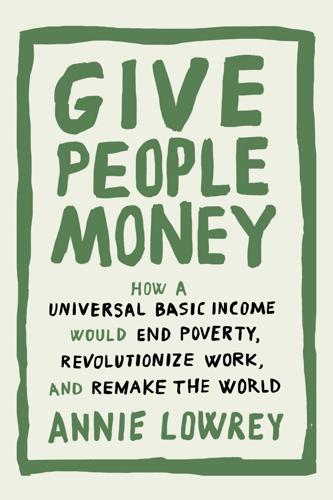
Give People Money
by
Annie Lowrey
Published 10 Jul 2018
It would dramatically reduce the need for a minimum wage. And it would empower workers by removing the threat of unemployment, which leaves the working class with little to no bargaining power.” It would also “dramatically reduce the amount that we’re already spending on subsistence programs.” The economists in the modern monetary theory school—the so-called deficit owls, who argue that money is nothing more than numbers and that governments should be far less afraid of deficits and debt—and the Center for American Progress have promoted similar policies. For all those upsides, though, such a program might be a nightmare to run.
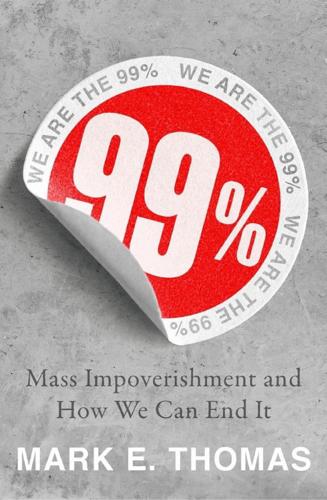
99%: Mass Impoverishment and How We Can End It
by
Mark Thomas
Published 7 Aug 2019
Behavioural economics seeks to address the fact – known for decades in other disciplines and more recently discovered by economists – that humans are not rational, consistent beings (Homo Economicus) with perfect information about the economy, who seek to maximize the discounted value of their own cash flows. Modern Monetary Theory seeks to ensure that the realities of a fiat currency (which can be created at will by government) and of sectoral balances which sum to zero are taken into account in policy-making. Most fundamentally, the work of economists such as Steve Keen and Marc Lavoie challenges the use of linear equilibrium-seeking models as the basis for understanding how the economy works.

What's Wrong With Economics: A Primer for the Perplexed
by
Robert Skidelsky
Published 3 Mar 2020
The main reason is that, unlike in most natural sciences, there is no secure method of bringing any generalising economic proposition to the test. There are too many fine economists and schools of thought outside the mainstream tradition to come even close to doing them justice within this book: ecological economics, feminist economics, econophysics, biophysical economics and modern monetary theory is an incomplete list of doctrines that are mostly set aside here. The only defence against their exclusion is that this book is not intended as a summary of the alternative schools or approaches. Excellent works in that vein include John T. Harvey’s Contending Perspectives in Economics and Rethinking Economics: An Introduction to Pluralist Economics, an edited volume produced by members of the student movement Rethinking Economics.2 If the presentation of the book suggests that those outside the mainstream have the status of mere dissidents to the dominant tradition, that is entirely unintended.
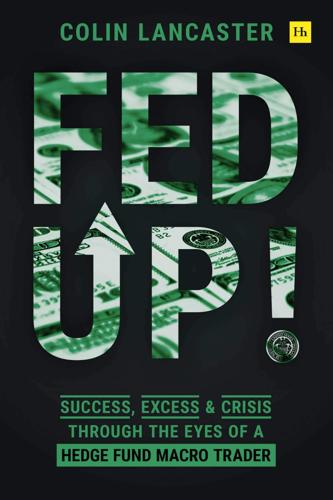
Fed Up!: Success, Excess and Crisis Through the Eyes of a Hedge Fund Macro Trader
by
Colin Lancaster
Published 3 May 2021
In a deflationary environment, wages go down. The real danger would be a period of deflation followed by a nasty dose of stagflation. After unsuccessfully trying to solve a debt crisis with more debt, policymakers will need to do something else. He thinks we could be headed to something called modern monetary theory (MMT), but this would bring serious inflationary implications. The central idea of MMT is that governments with a fiat currency system can and should print as much money as they need to spend. It all sounds enticing but seems to fly in the face of stuff like working hard, living modestly, and building a nest egg.
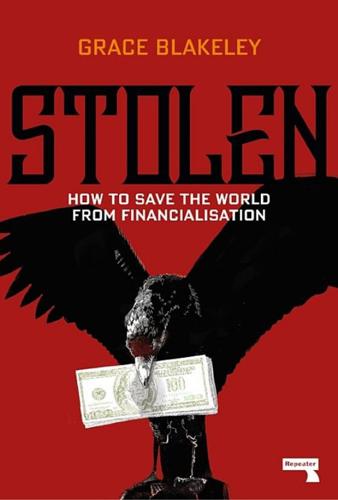
Stolen: How to Save the World From Financialisation
by
Grace Blakeley
Published 9 Sep 2019
Piketty’s wealth tax is a prime example of “solutionism”: a proposal intended to solve all of the world’s problems through tweaks to the current institutional architecture. He pays little attention to power, to politics, or any other drivers of change. The same can be said for a lot of other radical ideas that have recently become popular, like modern monetary theory, land value taxation, or universal basic income. These can all be understood as a kind of technocratic utopianism — they rely on the assumption that society can be transformed from above and that making one or two radical policy changes will completely transform the economy. Many of these policies are not incorrect or bad, but their adherents often prescribe them as the solution to all the world’s problems, without considering how we got to where we are in the first place.
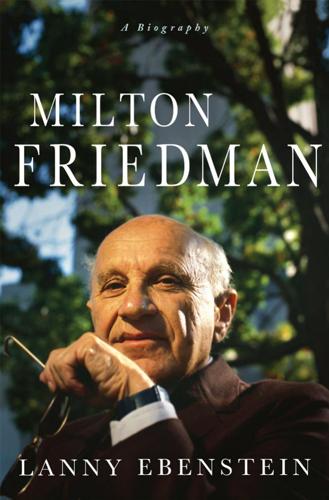
Milton Friedman: A Biography
by
Lanny Ebenstein
Published 23 Jan 2007
According to Bernanke, “One can hardly overstate the influence of Friedman’s monetary framework on contemporary monetary theory and practice. He identified the key empirical facts and he provided us with broad policy recommendations,” and “Friedman’s monetary framework has been so influential that, in its broad outlines . . . , it has nearly become identical with modern monetary theory and practice.”22 According to Alan Greenspan, Bernanke’s predecessor, “There are very few people over the generations who have ideas that are sufficiently original to materially alter the direction of civilization. Milton is one of these very few people.”23 Friedman wrote in 2001: “I have always myself emphasized that it took three words to describe the kind of capitalism I was in favor of: free private property.”
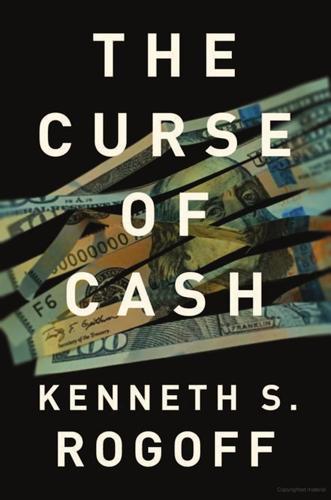
The Curse of Cash
by
Kenneth S Rogoff
Published 29 Aug 2016
Other states, most notably Virginia, were more careful.26 In 1729, the 23-year-old Ben Franklin made an indelible mark on the history of paper currency with his self-published book A Modest Enquiry into the Nature and Necessity of a Paper Currency. Although Franklin did not have access to modern monetary theory (and confused wealth and money in some places), overall the book is brilliantly intuitive. For example, Franklin had an innate grasp of what later came to be called the quantity theory of money: “There is a certain proportionate Quantity of Money requisite to carry on the trade of a Country freely and currently.”
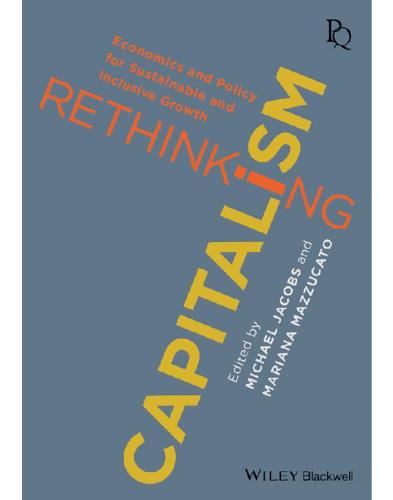
Rethinking Capitalism: Economics and Policy for Sustainable and Inclusive Growth
by
Michael Jacobs
and
Mariana Mazzucato
Published 31 Jul 2016
Her current research is funded by the European Commission, the Institute for New Economic Thinking (INET), the Ford Foundation, NASA and the Brazilian Ministry for Science and Technology. Stephanie Kelton is Professor of Economics at the University of Missouri-Kansas City. Her research expertise is in Federal Reserve operations, fiscal policy, social security, international finance and employment. She is best known for her contributions to the literature on Modern Monetary Theory. Her book, The State, The Market and the Euro (Edward Elgar, 2003) predicted the debt crisis in the eurozone. She served as Chief Economist on the US Senate Budget Committee and as an economic advisor to the Bernie Sanders 2016 presidential campaign. She was Founder and Editor-in-Chief of the top-ranked blog ‘New Economic Perspectives’ and a member of the TopWonks network of America's leading policy thinkers.

Practical Doomsday: A User's Guide to the End of the World
by
Michal Zalewski
Published 11 Jan 2022
Alas, if there’s one safe generalization about the prepper community, it’s that the domain is replete with misconceptions, politically tinged conspiracy theories, and patently dangerous wealth-management advice. The world of modern finance is simultaneously portrayed as a brutal game rigged against the little guy and as a nihilist charade orchestrated by bankrupt governments, with terms such as modern monetary theory, fractional reserve banking, or bailouts thrown in for dramatic effect. To navigate this perilous landscape, I find it useful to take a step back and consider how money came to be, what purpose it serves, and what determines its value today. The answers to these questions are more complex than one might expect—and they’re crucial to deciphering many of the pop-cultural clichés about how banks, financial markets, or the government are purportedly conspiring to deprive us of our hard-earned cash.

Chokepoint Capitalism
by
Rebecca Giblin
and
Cory Doctorow
Published 26 Sep 2022
Mark Paul, William Darity Jr., and Darrick Hamilton, “The Federal Job Guarantee—A Policy to Achieve Permanent Full Employment,” Center on Budget and Policy Priorities, Mar. 9, 2018, https://www.cbpp.org/research/full-employment/the-federal-job-guarantee-a-policy-to-achieve-permanent-full-employment. 29. Andrew Van Dam, “The U.S. Has Thrown More Than $6 Trillion at the Coronavirus Crisis. That Number Could Grow,” Washington Post, Apr. 16, 2020, https://www.washingtonpost.com/business/2020/04/15/coronavirus-economy-6-trillion. 30. Stephanie Kelten, The Deficit Myth: Modern Monetary Theory and the Birth of the People’s Economy (New York: Public Affairs, 2020). 31. A country has “monetary sovereignty” if it (a) issues its own currency and (b) borrows primarily in that currency. The US, Japan, Canada, Australia, and the UK (among others) are monetarily sovereign. The Eurozone countries are not (their currency is issued by the European Central Bank, not the EU member states’ banks).

The Ascent of Money: A Financial History of the World
by
Niall Ferguson
Published 13 Nov 2007
This bank also has a 10 per cent reserve rule, so it deposits $9 at the central bank and lends out the remaining $81 to another of its clients. After several more rounds, the professor asks the class to compute the increase in the supply of money. This allows him to introduce two of the core definitions of modern monetary theory: M0 (also known as the monetary base or high-powered money), which is equal to the total liabilities of the central bank, that is, cash plus the reserves of private sector banks on deposit at the central bank; and M1 (also known as narrow money), which is equal to cash in circulation plus demand or ‘sight’ deposits.

Capitalism 4.0: The Birth of a New Economy in the Aftermath of Crisis
by
Anatole Kaletsky
Published 22 Jun 2010
Available from http://cowles.econ.yale.edu/P/cp/p05a/p0532.pdf. 14 “I am the Lord your God and you shall have no other gods before me.” See also Bernanke speech in footnote 13: “Friedman’s monetary framework has been so influential that, in its broad outlines at least, it has nearly become identical with modern monetary theory and practice. I am reminded of the student first exposed to Shakespeare who complained to the professor: ‘I don’t see what’s so great about him. He was hardly original at all. All he did was string together a bunch of well-known quotations.’ The same issue arises when one assesses Friedman’s contributions.” 15 “The professors contrive new rules and methods . . . whereby all the fruits of the earth shall increase a hundredfold more than they do at present, with innumerable other happy proposals . . .
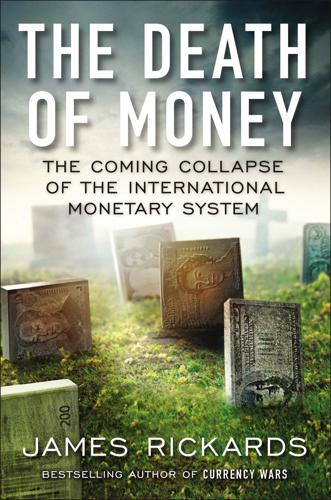
The Death of Money: The Coming Collapse of the International Monetary System
by
James Rickards
Published 7 Apr 2014
In the 1920s John Maynard Keynes adopted chartalism in his calls for the abolition of gold standards. More recent acolytes of the theory of money as an arm of state power are Paul McCulley, former executive at bond giant PIMCO, and Stephanie Kelton, economist at the University of Missouri, who marches under the banner of modern monetary theory. A new entrant in the money theory sweepstakes is the quantity theory of credit. This theory, advanced by Richard Duncan, is a variant of the quantity theory of money. Duncan proposes that credit creation has become so prolific and pervasive that the idea of money is now subsumed in the idea of credit, and that credit creation is the proper focus of monetary study and policy.
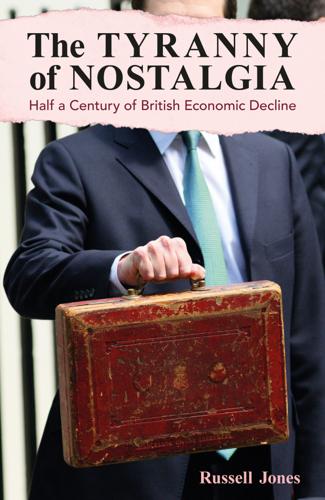
The Tyranny of Nostalgia: Half a Century of British Economic Decline
by
Russell Jones
Published 15 Jan 2023
This is, after all, what happened following the Great Depression – although admittedly it took a decade or so to come to fruition. Generally speaking, however, this was not the case after 2009. Notwithstanding the efforts of a small group of largely US-based economists to resurrect a particularly extravagant form of unreconstructed Keynesianism (so-called modern monetary theory, or MMT), there was no radical transformation of beliefs or approach – no revolution in thought or action. This is not to deny that some new life was breathed into the subject of economics. There were, for example, greater efforts to incorporate elements of sociology, anthropology, psychology and history, in order to better understand how individuals, companies, markets and whole economies function and how economic rationality could be undermined.
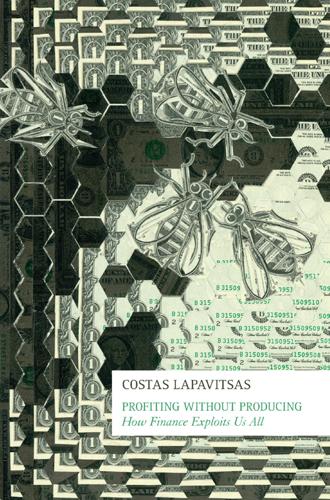
Profiting Without Producing: How Finance Exploits Us All
by
Costas Lapavitsas
Published 14 Aug 2013
Rather, the problem is that Smith’s abstraction does not provide a logical foundation for the emergence of money out of the difficulties of direct exchange. Contemporary ‘economic theory’ is fully aware of this weakness and has attempted to answer it by developing a variety of further abstractions, briefly mentioned in the text below. Graeber, and other critics from anthropology and related disciplines, appear unaware of this aspect of modern monetary theory. 18 As was explicitly acknowledged in Frank Hahn, Money and Inflation, Blackwell: Oxford, 1982. 19 Carl Menger, ‘On the Origin of Money’, Economic Journal 2, 1892, pp. 239–55. Carl Menger, Principles of Economics, New York: New York University Press, 1981. 20 The original contribution in this literature is Robert A.

More: The 10,000-Year Rise of the World Economy
by
Philip Coggan
Published 6 Feb 2020
After he replaced Ms Yellen, Trump criticised her successor, Jerome Powell, for pushing rates up too quickly. In Britain, Brexiteers criticised the Bank of England for being too gloomy in its forecasts of the economic impact of leaving the EU. On the left, some economists have criticised central banks for being too timid, and for failing to revive the economy. Some favour Modern Monetary Theory, which argues that a government that prints its own money cannot go bankrupt, and that there is thus no need to worry about budget deficits and plenty of scope for governments to spend money on infrastructure and social benefits.12 MMT advocates admit that inflation is a constraint on this process.

The Rise and Fall of the Neoliberal Order: America and the World in the Free Market Era
by
Gary Gerstle
Published 14 Oct 2022
Mason, “The American Rescue Plan as Economic Theory,” Slackwire, March 15, 2021, https://jwmason.org/slackwire/the-american-rescue-plan-as-economic-theory/, accessed September 2, 2021; Saahil Desai, “Joe Biden’s Man on the Left,” The Atlantic, October 29, 2020, https://www.theatlantic.com/politics/archive/2020/10/jared-bernstein-joe-biden-progressive-personnel/616861/, accessed September 2, 2021; Zachary Warmbrodt, “ ‘Radical’ Biden Nominee Faces Backlash from Banks,” Politico, September 24, 2021, https://www.politico.com/news/2021/09/24/radical-biden-nominee-faces-backlash-from-banks-514189, accessed September 28, 2021; Stephanie Kelton, The Deficit Myth: Modern Monetary Theory and the Birth of the People’s Economy (New York: PublicAffairs, 2021); Lina M. Khan, “The Amazon Anti-Trust Paradox,” Yale Law Review 126 (2017), 710-805, https://www.yalelawjournal.org/pdf/e.710.Khan.805_zuvfyyeh.pdf, accessed December 17, 2021; Saule T. Omarova, “The People’s Ledger: How to Democratize Money and Finance the Economy,” October 20, 2020, Cornell Legal Studies Research Paper No. 20-45, Vanderbilt Law Review, forthcoming, available at SSRN: https://ssrn.com/abstract=3715735 or http://dx.doi.org/10.2139/ssrn.3715735, accessed September 27, 2021.
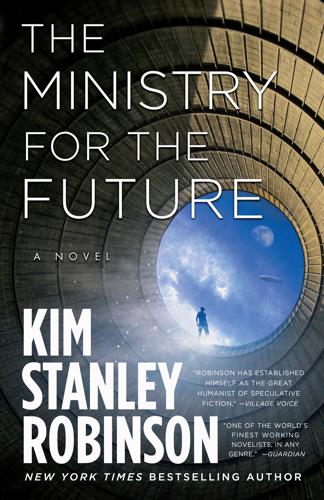
The Ministry for the Future: A Novel
by
Kim Stanley Robinson
Published 5 Oct 2020
Cowboys did figure-eights and stood in their saddles and twirled their lassoes, sheepdogs nimbly nipped sheep through gates, and the images and stories went out worldwide. It was just one moment of the storm, but after that, habitat corridors were more of a thing. E. O. Wilson’s great books shot to the top of the non-fiction bestseller lists, and we could continue the work with more understanding and public support. On to the Half Earth! 73 Modern Monetary Theory was in some ways a re-introduction of Keynesian economics into the climate crisis. Its foundational axiom was that the economy works for humans, not humans for the economy; this implied that full employment should be the policy goal of the governments that made and enforced the economic laws.